Inglês
Exibindo questões de 101 a 200.
Os versos do poema - Questão de Inglês - FUVEST 2022
Inglês - 2022Lying, thinking
Last night
How to find my soul a home
Where water is not thirsty
And bread loaf is not stone
I came up with one thing
And I don't believe I'm wrong
That nobody,
But nobody
Can make it out here alone
Considerando os elementos visuais e verbais da figura - FUVEST 2022
Inglês - 2022
Examine o meme publicado pela comunidade “The - UNESP 2022/Biológicas
Inglês - 2022Examine o meme publicado pela comunidade “The Language Nerds” em sua conta no Facebook em D07.04.2021.
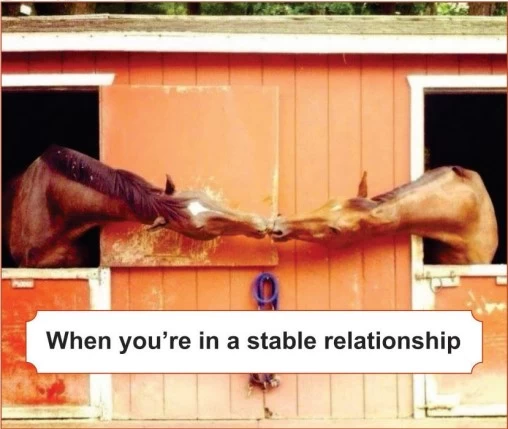
Art which is based on images of mass consumer - UNESP 2022/Biológicas
Inglês - 2022Art which is based on images of mass consumer culture. Pop art was initially regarded as a reaction from abstract expressionism because its exponents brought back figural imagery and made use of impersonal handling. It was seen as a descendant of Dada because it debunked the seriousness of the art world and embraced the use or reproduction of commonplace subjects. Comic books, advertisements, packaging, and images from television and the cinema were all part of the iconography of the movement.
Examine os gráficos e leia o texto para - UNESP 2022/Biológicas
Inglês - 2022Examine os gráficos e leia o texto para responder às questões de 21 a 27.
Educated Americans live longer, as others die younger
_____________________________________________
Catching up, falling behind
Unites States, average life expectancy at age 25

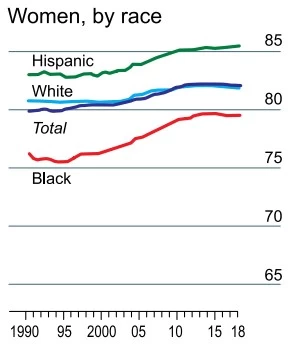
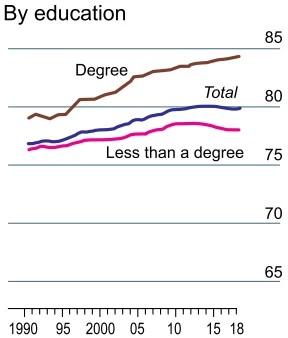
(Anne Case and Angus Deaton. “Life expectancy in adulthood is falling for those without a BA degree, but as educational gaps have widened, racial gaps have narrowed”. PNAS, 2021. Adaptado.)
A 25-year-old American with a university degree can expect to live almost a decade longer than a contemporary who dropped out of high school. Although researchers have long known that the rich live longer than the poor, this education gap is less well documented — and is especially marked in rich countries. And whereas the average American’s expected span has been flat in recent years — and, strikingly, even fell between 2015 and 2017 — that of the one-third with a bachelor’s degree has continued to lengthen.
This disparity in life expectancy is growing, according to new research published in the Proceedings of the National Academy of Sciences. Using data from nearly 50m death certificates filed between 1990 and 2018, Anne Case and Angus Deaton of Princeton University analysed differences in life expectancy by sex, race, ethnicity and education. They found that the lifespans of those with and without a bachelor’s degree started to diverge in the 1990s and 2000s. This gap grew even wider in the 2010s as the life expectancy of degree-holders continued to rise while that of other Americans got shorter.
What is the link between schooling and longevity? Some argue that better-educated people develop healthier lifestyles: each additional year of study reduces the chances of being a smoker and of being overweight. The better-educated earn more, which in turn is associated with greater health. Ms Case and Mr Deaton argue that changes in labour markets, including the rise of automation and increased demand for highly-educated workers, coupled with the rising costs of employerprovided health care, have depressed the supply of wellpaid jobs for those without a degree. This may be contributing to higher rates of alcohol and drug use, suicide and other “deaths of despair”.
(www.economist.com,17.03.2021. Adaptado.)
As informações apresentadas no primeiro - UNESP 2022/Biológicas
Inglês - 2022Examine os gráficos e leia o texto para responder às questões de 21 a 27.
Educated Americans live longer, as others die younger
_____________________________________________
Catching up, falling behind
Unites States, average life expectancy at age 25



(Anne Case and Angus Deaton. “Life expectancy in adulthood is falling for those without a BA degree, but as educational gaps have widened, racial gaps have narrowed”. PNAS, 2021. Adaptado.)
A 25-year-old American with a university degree can expect to live almost a decade longer than a contemporary who dropped out of high school. Although researchers have long known that the rich live longer than the poor, this education gap is less well documented — and is especially marked in rich countries. And whereas the average American’s expected span has been flat in recent years — and, strikingly, even fell between 2015 and 2017 — that of the one-third with a bachelor’s degree has continued to lengthen.
This disparity in life expectancy is growing, according to new research published in the Proceedings of the National Academy of Sciences. Using data from nearly 50m death certificates filed between 1990 and 2018, Anne Case and Angus Deaton of Princeton University analysed differences in life expectancy by sex, race, ethnicity and education. They found that the lifespans of those with and without a bachelor’s degree started to diverge in the 1990s and 2000s. This gap grew even wider in the 2010s as the life expectancy of degree-holders continued to rise while that of other Americans got shorter.
What is the link between schooling and longevity? Some argue that better-educated people develop healthier lifestyles: each additional year of study reduces the chances of being a smoker and of being overweight. The better-educated earn more, which in turn is associated with greater health. Ms Case and Mr Deaton argue that changes in labour markets, including the rise of automation and increased demand for highly-educated workers, coupled with the rising costs of employerprovided health care, have depressed the supply of wellpaid jobs for those without a degree. This may be contributing to higher rates of alcohol and drug use, suicide and other “deaths of despair”.
(www.economist.com,17.03.2021. Adaptado.)
No trecho do primeiro parágrafo “And whereas - UNESP 2022/Biológicas
Inglês - 2022Examine os gráficos e leia o texto para responder às questões de 21 a 27.
Educated Americans live longer, as others die younger
_____________________________________________
Catching up, falling behind
Unites States, average life expectancy at age 25



(Anne Case and Angus Deaton. “Life expectancy in adulthood is falling for those without a BA degree, but as educational gaps have widened, racial gaps have narrowed”. PNAS, 2021. Adaptado.)
A 25-year-old American with a university degree can expect to live almost a decade longer than a contemporary who dropped out of high school. Although researchers have long known that the rich live longer than the poor, this education gap is less well documented — and is especially marked in rich countries. And whereas the average American’s expected span has been flat in recent years — and, strikingly, even fell between 2015 and 2017 — that of the one-third with a bachelor’s degree has continued to lengthen.
This disparity in life expectancy is growing, according to new research published in the Proceedings of the National Academy of Sciences. Using data from nearly 50m death certificates filed between 1990 and 2018, Anne Case and Angus Deaton of Princeton University analysed differences in life expectancy by sex, race, ethnicity and education. They found that the lifespans of those with and without a bachelor’s degree started to diverge in the 1990s and 2000s. This gap grew even wider in the 2010s as the life expectancy of degree-holders continued to rise while that of other Americans got shorter.
What is the link between schooling and longevity? Some argue that better-educated people develop healthier lifestyles: each additional year of study reduces the chances of being a smoker and of being overweight. The better-educated earn more, which in turn is associated with greater health. Ms Case and Mr Deaton argue that changes in labour markets, including the rise of automation and increased demand for highly-educated workers, coupled with the rising costs of employerprovided health care, have depressed the supply of wellpaid jobs for those without a degree. This may be contributing to higher rates of alcohol and drug use, suicide and other “deaths of despair”.
(www.economist.com,17.03.2021. Adaptado.)
In the excerpt from the first paragraph “and - UNESP 2022/Biológicas
Inglês - 2022Examine os gráficos e leia o texto para responder às questões de 21 a 27.
Educated Americans live longer, as others die younger
_____________________________________________
Catching up, falling behind
Unites States, average life expectancy at age 25



(Anne Case and Angus Deaton. “Life expectancy in adulthood is falling for those without a BA degree, but as educational gaps have widened, racial gaps have narrowed”. PNAS, 2021. Adaptado.)
A 25-year-old American with a university degree can expect to live almost a decade longer than a contemporary who dropped out of high school. Although researchers have long known that the rich live longer than the poor, this education gap is less well documented — and is especially marked in rich countries. And whereas the average American’s expected span has been flat in recent years — and, strikingly, even fell between 2015 and 2017 — that of the one-third with a bachelor’s degree has continued to lengthen.
This disparity in life expectancy is growing, according to new research published in the Proceedings of the National Academy of Sciences. Using data from nearly 50m death certificates filed between 1990 and 2018, Anne Case and Angus Deaton of Princeton University analysed differences in life expectancy by sex, race, ethnicity and education. They found that the lifespans of those with and without a bachelor’s degree started to diverge in the 1990s and 2000s. This gap grew even wider in the 2010s as the life expectancy of degree-holders continued to rise while that of other Americans got shorter.
What is the link between schooling and longevity? Some argue that better-educated people develop healthier lifestyles: each additional year of study reduces the chances of being a smoker and of being overweight. The better-educated earn more, which in turn is associated with greater health. Ms Case and Mr Deaton argue that changes in labour markets, including the rise of automation and increased demand for highly-educated workers, coupled with the rising costs of employerprovided health care, have depressed the supply of wellpaid jobs for those without a degree. This may be contributing to higher rates of alcohol and drug use, suicide and other “deaths of despair”.
(www.economist.com,17.03.2021. Adaptado.)
No trecho do segundo parágrafo “while that of - UNESP 2022/Biológicas
Inglês - 2022Examine os gráficos e leia o texto para responder às questões de 21 a 27.
Educated Americans live longer, as others die younger
_____________________________________________
Catching up, falling behind
Unites States, average life expectancy at age 25



(Anne Case and Angus Deaton. “Life expectancy in adulthood is falling for those without a BA degree, but as educational gaps have widened, racial gaps have narrowed”. PNAS, 2021. Adaptado.)
A 25-year-old American with a university degree can expect to live almost a decade longer than a contemporary who dropped out of high school. Although researchers have long known that the rich live longer than the poor, this education gap is less well documented — and is especially marked in rich countries. And whereas the average American’s expected span has been flat in recent years — and, strikingly, even fell between 2015 and 2017 — that of the one-third with a bachelor’s degree has continued to lengthen.
This disparity in life expectancy is growing, according to new research published in the Proceedings of the National Academy of Sciences. Using data from nearly 50m death certificates filed between 1990 and 2018, Anne Case and Angus Deaton of Princeton University analysed differences in life expectancy by sex, race, ethnicity and education. They found that the lifespans of those with and without a bachelor’s degree started to diverge in the 1990s and 2000s. This gap grew even wider in the 2010s as the life expectancy of degree-holders continued to rise while that of other Americans got shorter.
What is the link between schooling and longevity? Some argue that better-educated people develop healthier lifestyles: each additional year of study reduces the chances of being a smoker and of being overweight. The better-educated earn more, which in turn is associated with greater health. Ms Case and Mr Deaton argue that changes in labour markets, including the rise of automation and increased demand for highly-educated workers, coupled with the rising costs of employerprovided health care, have depressed the supply of wellpaid jobs for those without a degree. This may be contributing to higher rates of alcohol and drug use, suicide and other “deaths of despair”.
(www.economist.com,17.03.2021. Adaptado.)
According to the third paragraph, better - UNESP 2022/Biológicas
Inglês - 2022Examine os gráficos e leia o texto para responder às questões de 21 a 27.
Educated Americans live longer, as others die younger
_____________________________________________
Catching up, falling behind
Unites States, average life expectancy at age 25



(Anne Case and Angus Deaton. “Life expectancy in adulthood is falling for those without a BA degree, but as educational gaps have widened, racial gaps have narrowed”. PNAS, 2021. Adaptado.)
A 25-year-old American with a university degree can expect to live almost a decade longer than a contemporary who dropped out of high school. Although researchers have long known that the rich live longer than the poor, this education gap is less well documented — and is especially marked in rich countries. And whereas the average American’s expected span has been flat in recent years — and, strikingly, even fell between 2015 and 2017 — that of the one-third with a bachelor’s degree has continued to lengthen.
This disparity in life expectancy is growing, according to new research published in the Proceedings of the National Academy of Sciences. Using data from nearly 50m death certificates filed between 1990 and 2018, Anne Case and Angus Deaton of Princeton University analysed differences in life expectancy by sex, race, ethnicity and education. They found that the lifespans of those with and without a bachelor’s degree started to diverge in the 1990s and 2000s. This gap grew even wider in the 2010s as the life expectancy of degree-holders continued to rise while that of other Americans got shorter.
What is the link between schooling and longevity? Some argue that better-educated people develop healthier lifestyles: each additional year of study reduces the chances of being a smoker and of being overweight. The better-educated earn more, which in turn is associated with greater health. Ms Case and Mr Deaton argue that changes in labour markets, including the rise of automation and increased demand for highly-educated workers, coupled with the rising costs of employerprovided health care, have depressed the supply of wellpaid jobs for those without a degree. This may be contributing to higher rates of alcohol and drug use, suicide and other “deaths of despair”.
(www.economist.com,17.03.2021. Adaptado.)
No trecho do terceiro parágrafo “The better - UNESP 2022/Biológicas
Inglês - 2022Examine os gráficos e leia o texto para responder às questões de 21 a 27.
Educated Americans live longer, as others die younger
_____________________________________________
Catching up, falling behind
Unites States, average life expectancy at age 25



(Anne Case and Angus Deaton. “Life expectancy in adulthood is falling for those without a BA degree, but as educational gaps have widened, racial gaps have narrowed”. PNAS, 2021. Adaptado.)
A 25-year-old American with a university degree can expect to live almost a decade longer than a contemporary who dropped out of high school. Although researchers have long known that the rich live longer than the poor, this education gap is less well documented — and is especially marked in rich countries. And whereas the average American’s expected span has been flat in recent years — and, strikingly, even fell between 2015 and 2017 — that of the one-third with a bachelor’s degree has continued to lengthen.
This disparity in life expectancy is growing, according to new research published in the Proceedings of the National Academy of Sciences. Using data from nearly 50m death certificates filed between 1990 and 2018, Anne Case and Angus Deaton of Princeton University analysed differences in life expectancy by sex, race, ethnicity and education. They found that the lifespans of those with and without a bachelor’s degree started to diverge in the 1990s and 2000s. This gap grew even wider in the 2010s as the life expectancy of degree-holders continued to rise while that of other Americans got shorter.
What is the link between schooling and longevity? Some argue that better-educated people develop healthier lifestyles: each additional year of study reduces the chances of being a smoker and of being overweight. The better-educated earn more, which in turn is associated with greater health. Ms Case and Mr Deaton argue that changes in labour markets, including the rise of automation and increased demand for highly-educated workers, coupled with the rising costs of employerprovided health care, have depressed the supply of wellpaid jobs for those without a degree. This may be contributing to higher rates of alcohol and drug use, suicide and other “deaths of despair”.
(www.economist.com,17.03.2021. Adaptado.)
After comparing both maps, one can say that: - UNESP 2022/Biológicas
Inglês - 2022Examine os mapas que apresentam a média de anos de escolaridade para a população de 25 anos ou mais, do ano 2000 e do ano 2017, para responder à questão 28.
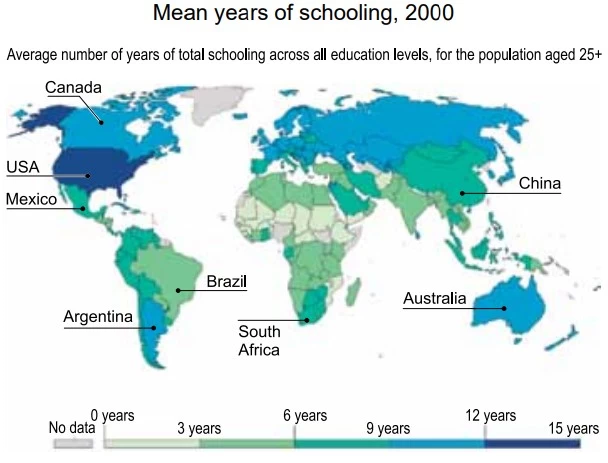
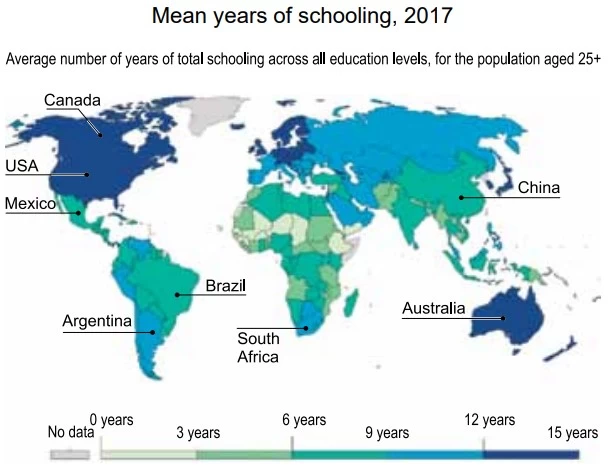
From the comic strip, one can say that - UNESP 2022/Biológicas
Inglês - 2022Leia a tira para responder às questões 29 e 30

No trecho do primeiro quadrinho “I guess we - UNESP 2022/Biológicas
Inglês - 2022Leia a tira para responder às questões 29 e 30

A palavra “cringe” viralizou nas redes sociais no - UNICAMP 2022
Inglês - 2022A palavra “cringe” viralizou nas redes sociais no Brasil em 2021. Observe sua definição, em português, apontada pelo “Dicionário Informal” on-line:
Vergonha alheia;
Exemplo de uso da palavra cringe:
A cena que presenciamos ontem foi muito cringe.
É cada situação cringe que presenciamos.
Não consigo nem ver, de tão cringe.
Veja, agora, a definição da mesma palavra pelo “Cambridge Dictionary”, também em versão on-line:
to suddenly move away from someone or something because you are frightened
to feel very embarrassed:
• I cringed at the sight of my dad dancing.
Em artigo publicado em 14 de junho de 2020, o jornal - UNICAMP 2022
Inglês - 2022Em artigo publicado em 14 de junho de 2020, o jornal The Straits Times, de Singapura, apresentou os resultados de uma pesquisa sobre a percepção dos respondentes a respeito das profissões mais essenciais durante a pandemia. A imagem a seguir revela algumas estatísticas obtidas com base nessas respostas.

Em um post em sua rede social, o comediante Rishi Budhrani comentou esses resultados:
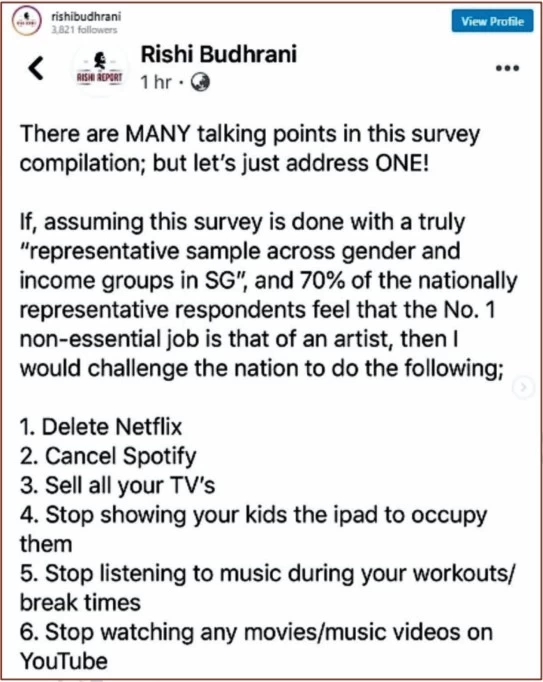
Em 2020, Joaquin Phoenix ganhou o Oscar de melhor ator - UNICAMP 2022
Inglês - 2022Em 2020, Joaquin Phoenix ganhou o Oscar de melhor ator por sua interpretação no filme “Coringa”, de 2019. Apresenta-se, a seguir, um trecho de seu discurso na ocasião.

“I think whether we’re talking about gender inequality or racism or queer rights or indigenous rights or animal rights, we’re talking about the fight against injustice. We’re talking about the fight against the belief that one nation, one people, one race, one gender, or one species has the right to dominate, control, and use and exploit another with impunity. I think that we’ve become very disconnected from the natural world, and many of us, what we’re guilty of, is an egocentric worldview: the belief that we’re the center of the universe. We go into the natural world, and we plunder it for its resources. We feel entitled to artificially inseminate a cow, and when she gives birth, we steal her baby even though her cries of anguish are unmistakable. Then we take her milk that’s intended for her calf, and we put it in our coffee and our cereal”.
On a summer night in 1969, police raided the Stonewall - UNICAMP 2022
Inglês - 2022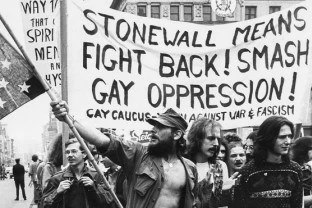
On a summer night in 1969, police raided the Stonewall Inn, a bar in New York City that served as a haven for the city’s gay, lesbian, and transgender community. Back then, homosexual acts were illegal in every state in the USA except Illinois, and bars and restaurants could get shut down for having gay employees or serving gay patrons. Most gay bars in New York at the time (including the Stonewall) were operated by the Mafia, who paid corruptible police officers to look the other way and blackmailed wealthy gay patrons by threatening to “out” them. Police raids on gay bars were common, but on that particular night, members of the city’s LGBTQIA+ community decided to fight back, sparking an uprising that would launch a new era of resistance and revolution. Though the gay rights movement didn’t begin at Stonewall, the uprising did mark a turning point, as earlier “homophile” organizations like the Mattachine Society gave way to more radical groups like the Gay Liberation Front and the Gay Activists Alliance.
There is no evidence that hydroxychloroquine helps - UNICAMP 2022
Inglês - 2022There is no evidence that hydroxychloroquine helps Covid-19 patients. So why is Congress still discussing it?
By Ashish Jha
Dean of the Brown University School of Public Health Nov 24, 2020
Last week, in the United States Senate, the conversation was all about the drug hydroxychloroquine. There has been no evidence that hydroxychloroquine improves outcomes for Covid-19 patients; some studies have found that it causes more harm than good. The hearing and the theater around it reflect the disinformation campaigns that have undermined belief in science. Neither Ron Johnson, the Wisconsin senator who is the chairman of the committee, nor his chosen witnesses showed more than a passing interest in evidence. Intuition and the personal experiences of individual doctors were the guiding principles. Early in the pandemic, President Trump referred to hydroxychloroquine as a “game changer”; “I feel good about it”, he said.
That’s not how we practice medicine. We have to protect lives through public health measures while we await widespread vaccinations. By endorsing unfounded therapies, we risk jeopardizing a century’s work of medical progress. Do we really want to go back to not using the best evidence to decide which treatments work? Do we want to let politicians prescribe our medications? Science and evidence are the tools we use to know what is true. They are the foundation of modern medicine and public health.
O trecho a seguir pertence ao romance “The Bell Jar” - UNICAMP 2022
Inglês - 2022O trecho a seguir pertence ao romance “The Bell Jar” (A Redoma de Vidro), da escritora estadunidense Sylvia Plath.
“From the tip of every branch, like a fat purple fig, a wonderful future beckoned and winked. One fig was a husband and a happy home and children, and another fig was a famous poet and another fig was a brilliant professor, (…) and beyond and above these figs were many more figs I couldn't quite make out. (…) I wanted each and every one of them, but choosing one meant losing all the rest, and, as I sat there, unable to decide, the figs began to wrinkle and go black, and, one by one, they plopped to the ground at my feet.”
Gaslighting is a form of psychological abuse where a - UNICAMP 2022
Inglês - 2022
Gaslighting is a form of psychological abuse where a person or group makes someone question their sanity, perception of reality, or memories. People experiencing gaslighting often feel confused, anxious, and unable to trust themselves. The term gaslighting derives from the 1938 play and 1944 film “Gaslight”, in which a husband manipulates his wife into thinking she has a mental illness by dimming their gasfueled lights and telling her she is hallucinating. While anyone can experience gaslighting, it is especially common in intimate relationships and in social interactions where there is an imbalance of power. A person who is on the receiving end of this behavior is experiencing abuse.
A poeta e ativista palestina Rafeef Ziadah estava - UNICAMP 2022
Inglês - 2022A poeta e ativista palestina Rafeef Ziadah estava participando da cobertura jornalística do massacre em Gaza quando um jornalista não-palestino perguntou-lhe se as coisas não seriam melhores se os palestinos parassem de ensinar o ódio às suas crianças. Em resposta a essa pergunta, Ziadah compôs o poema “We teach life, sir”, transcrito a seguir:
Today, my body was a TV’d massacre
that had to fit into sound-bites and word limits.
And I perfected my English and I learned my UN resolutions.
But still, he asked me, Ms. Ziadah, don’t you think that everything would be resolved
if you would just stop teaching so much hatred to your children?
Pause.
I look inside of me for strength to be patient
but patience is not at the tip of my tongue as the bombs drop over Gaza.
Today, my body was a TV’d massacre made to fit into soundbites and word limits
and move those that are desensitized to terrorist blood.
And these are not two equal sides: occupier and occupied.
And a hundred dead, two hundred dead, and a thousand dead.
And between that, war crime, and massacre,
I vent out words and smile “not exotic”, “not terrorist”.
No sound-bite will fix this.
We teach life, sir.
A rainha Nzinga (1624-1663), governante seiscentista do -UNICAMP 2022
Inglês - 2022A rainha Nzinga (1624-1663), governante seiscentista do Ndongo, um reino da África Central situado na atual Angola, chegou ao poder graças à sua competência militar, à diplomacia bem sucedida, à manipulação da religião e de conflitos entre potências europeias. Ela criou as condições para a primeira sublevação popular mbundu contra a exploração portuguesa ao atrair para sua causa os chefes que estavam sob influência europeia. Depois conquistou o reino vizinho de Matamba e o governou por três décadas junto com o que restou do poderoso reino Ndongo; desafiou treze governadores portugueses que regeram Angola entre 1622 e 1633. Apesar de seus feitos e o longo reinado, comparável ao de Elizabeth I (1503–1603) da Inglaterra, ela foi desacreditada pelos contemporâneos europeus e por autores posteriores.
According to the text, the study highlights a) the - FAMERP 2022
Inglês - 2022Leia o texto para responder às questões de 11 a 17.

You may want to skip the toppings on your next hot dog, or skip it altogether: Health researchers at the University of Michigan have found that eating a single hot dog could take 36 minutes off your life. In their study, researchers looked at 5,853 foods in the US diet and measured their effects in minutes of healthy life gained or lost. “We wanted to make a health-based evaluation of the beneficial and detrimental impacts of the food in the entire diet,” Olivier Jolliet, professor of environmental health sciences at the university and senior author of the paper, told CNN.
The team came up with an index that calculates the net beneficial or detrimental health burden in minutes of healthy life associated with a serving of food. It’s based on a study called the Global Burden of Disease, which measures morbidity associated with a person’s food choices. “For example, 0.45 minutes are lost per gram of processed meat, or 0.1 minutes are gained per gram of fruit. We then look at the composition of each food and then multiplied this number by the corresponding food profiles that we previously developed,” said the professor.
One of the foods researchers measured was a standard beef hot dog on a bun. Its 61 grams of processed meat resulted in the loss of 27 minutes of healthy life, Jolliet said — but when ingredients like sodium and trans fatty acids were factored in, the final value was 36 minutes lost. Consumption of foods such as nuts, legumes, seafood, fruits and nonstarchy vegetables, on the other hand, have positive effects on health, the study found. “The index is primarily there to help aid in selecting and using calories consumed on a daily basis to tweak a minimum of habits and make the minimum of change to obtain a maximum benefit for health and the environment from our food experience,” Jolliet said.
(Lauren M. Johnson. https://edition.cnn.com, 27.08.2021. Adaptado.)
No trecho do primeiro parágrafo “a single hot dog could - FAMERP 2022
Inglês - 2022Leia o texto para responder às questões de 11 a 17.

You may want to skip the toppings on your next hot dog, or skip it altogether: Health researchers at the University of Michigan have found that eating a single hot dog could take 36 minutes off your life. In their study, researchers looked at 5,853 foods in the US diet and measured their effects in minutes of healthy life gained or lost. “We wanted to make a health-based evaluation of the beneficial and detrimental impacts of the food in the entire diet,” Olivier Jolliet, professor of environmental health sciences at the university and senior author of the paper, told CNN.
The team came up with an index that calculates the net beneficial or detrimental health burden in minutes of healthy life associated with a serving of food. It’s based on a study called the Global Burden of Disease, which measures morbidity associated with a person’s food choices. “For example, 0.45 minutes are lost per gram of processed meat, or 0.1 minutes are gained per gram of fruit. We then look at the composition of each food and then multiplied this number by the corresponding food profiles that we previously developed,” said the professor.
One of the foods researchers measured was a standard beef hot dog on a bun. Its 61 grams of processed meat resulted in the loss of 27 minutes of healthy life, Jolliet said — but when ingredients like sodium and trans fatty acids were factored in, the final value was 36 minutes lost. Consumption of foods such as nuts, legumes, seafood, fruits and nonstarchy vegetables, on the other hand, have positive effects on health, the study found. “The index is primarily there to help aid in selecting and using calories consumed on a daily basis to tweak a minimum of habits and make the minimum of change to obtain a maximum benefit for health and the environment from our food experience,” Jolliet said.
(Lauren M. Johnson. https://edition.cnn.com, 27.08.2021. Adaptado.)
In the excerpt from the second paragraph “which measures - FAMERP 2022
Inglês - 2022Leia o texto para responder às questões de 11 a 17.

You may want to skip the toppings on your next hot dog, or skip it altogether: Health researchers at the University of Michigan have found that eating a single hot dog could take 36 minutes off your life. In their study, researchers looked at 5,853 foods in the US diet and measured their effects in minutes of healthy life gained or lost. “We wanted to make a health-based evaluation of the beneficial and detrimental impacts of the food in the entire diet,” Olivier Jolliet, professor of environmental health sciences at the university and senior author of the paper, told CNN.
The team came up with an index that calculates the net beneficial or detrimental health burden in minutes of healthy life associated with a serving of food. It’s based on a study called the Global Burden of Disease, which measures morbidity associated with a person’s food choices. “For example, 0.45 minutes are lost per gram of processed meat, or 0.1 minutes are gained per gram of fruit. We then look at the composition of each food and then multiplied this number by the corresponding food profiles that we previously developed,” said the professor.
One of the foods researchers measured was a standard beef hot dog on a bun. Its 61 grams of processed meat resulted in the loss of 27 minutes of healthy life, Jolliet said — but when ingredients like sodium and trans fatty acids were factored in, the final value was 36 minutes lost. Consumption of foods such as nuts, legumes, seafood, fruits and nonstarchy vegetables, on the other hand, have positive effects on health, the study found. “The index is primarily there to help aid in selecting and using calories consumed on a daily basis to tweak a minimum of habits and make the minimum of change to obtain a maximum benefit for health and the environment from our food experience,” Jolliet said.
(Lauren M. Johnson. https://edition.cnn.com, 27.08.2021. Adaptado.)
No trecho do segundo parágrafo “For example, 0.45 - FAMERP 2022
Inglês - 2022Leia o texto para responder às questões de 11 a 17.

You may want to skip the toppings on your next hot dog, or skip it altogether: Health researchers at the University of Michigan have found that eating a single hot dog could take 36 minutes off your life. In their study, researchers looked at 5,853 foods in the US diet and measured their effects in minutes of healthy life gained or lost. “We wanted to make a health-based evaluation of the beneficial and detrimental impacts of the food in the entire diet,” Olivier Jolliet, professor of environmental health sciences at the university and senior author of the paper, told CNN.
The team came up with an index that calculates the net beneficial or detrimental health burden in minutes of healthy life associated with a serving of food. It’s based on a study called the Global Burden of Disease, which measures morbidity associated with a person’s food choices. “For example, 0.45 minutes are lost per gram of processed meat, or 0.1 minutes are gained per gram of fruit. We then look at the composition of each food and then multiplied this number by the corresponding food profiles that we previously developed,” said the professor.
One of the foods researchers measured was a standard beef hot dog on a bun. Its 61 grams of processed meat resulted in the loss of 27 minutes of healthy life, Jolliet said — but when ingredients like sodium and trans fatty acids were factored in, the final value was 36 minutes lost. Consumption of foods such as nuts, legumes, seafood, fruits and nonstarchy vegetables, on the other hand, have positive effects on health, the study found. “The index is primarily there to help aid in selecting and using calories consumed on a daily basis to tweak a minimum of habits and make the minimum of change to obtain a maximum benefit for health and the environment from our food experience,” Jolliet said.
(Lauren M. Johnson. https://edition.cnn.com, 27.08.2021. Adaptado.)
No trecho do segundo parágrafo “We then look at the - FAMERP 2022
Inglês - 2022Leia o texto para responder às questões de 11 a 17.

You may want to skip the toppings on your next hot dog, or skip it altogether: Health researchers at the University of Michigan have found that eating a single hot dog could take 36 minutes off your life. In their study, researchers looked at 5,853 foods in the US diet and measured their effects in minutes of healthy life gained or lost. “We wanted to make a health-based evaluation of the beneficial and detrimental impacts of the food in the entire diet,” Olivier Jolliet, professor of environmental health sciences at the university and senior author of the paper, told CNN.
The team came up with an index that calculates the net beneficial or detrimental health burden in minutes of healthy life associated with a serving of food. It’s based on a study called the Global Burden of Disease, which measures morbidity associated with a person’s food choices. “For example, 0.45 minutes are lost per gram of processed meat, or 0.1 minutes are gained per gram of fruit. We then look at the composition of each food and then multiplied this number by the corresponding food profiles that we previously developed,” said the professor.
One of the foods researchers measured was a standard beef hot dog on a bun. Its 61 grams of processed meat resulted in the loss of 27 minutes of healthy life, Jolliet said — but when ingredients like sodium and trans fatty acids were factored in, the final value was 36 minutes lost. Consumption of foods such as nuts, legumes, seafood, fruits and nonstarchy vegetables, on the other hand, have positive effects on health, the study found. “The index is primarily there to help aid in selecting and using calories consumed on a daily basis to tweak a minimum of habits and make the minimum of change to obtain a maximum benefit for health and the environment from our food experience,” Jolliet said.
(Lauren M. Johnson. https://edition.cnn.com, 27.08.2021. Adaptado.)
No contexto em que se insere, um trecho que expressa - FAMERP 2022
Inglês - 2022Leia o texto para responder às questões de 11 a 17.

You may want to skip the toppings on your next hot dog, or skip it altogether: Health researchers at the University of Michigan have found that eating a single hot dog could take 36 minutes off your life. In their study, researchers looked at 5,853 foods in the US diet and measured their effects in minutes of healthy life gained or lost. “We wanted to make a health-based evaluation of the beneficial and detrimental impacts of the food in the entire diet,” Olivier Jolliet, professor of environmental health sciences at the university and senior author of the paper, told CNN.
The team came up with an index that calculates the net beneficial or detrimental health burden in minutes of healthy life associated with a serving of food. It’s based on a study called the Global Burden of Disease, which measures morbidity associated with a person’s food choices. “For example, 0.45 minutes are lost per gram of processed meat, or 0.1 minutes are gained per gram of fruit. We then look at the composition of each food and then multiplied this number by the corresponding food profiles that we previously developed,” said the professor.
One of the foods researchers measured was a standard beef hot dog on a bun. Its 61 grams of processed meat resulted in the loss of 27 minutes of healthy life, Jolliet said — but when ingredients like sodium and trans fatty acids were factored in, the final value was 36 minutes lost. Consumption of foods such as nuts, legumes, seafood, fruits and nonstarchy vegetables, on the other hand, have positive effects on health, the study found. “The index is primarily there to help aid in selecting and using calories consumed on a daily basis to tweak a minimum of habits and make the minimum of change to obtain a maximum benefit for health and the environment from our food experience,” Jolliet said.
(Lauren M. Johnson. https://edition.cnn.com, 27.08.2021. Adaptado.)
In the excerpt from the third paragraph “The index - FAMERP 2022
Inglês - 2022Leia o texto para responder às questões de 11 a 17.

You may want to skip the toppings on your next hot dog, or skip it altogether: Health researchers at the University of Michigan have found that eating a single hot dog could take 36 minutes off your life. In their study, researchers looked at 5,853 foods in the US diet and measured their effects in minutes of healthy life gained or lost. “We wanted to make a health-based evaluation of the beneficial and detrimental impacts of the food in the entire diet,” Olivier Jolliet, professor of environmental health sciences at the university and senior author of the paper, told CNN.
The team came up with an index that calculates the net beneficial or detrimental health burden in minutes of healthy life associated with a serving of food. It’s based on a study called the Global Burden of Disease, which measures morbidity associated with a person’s food choices. “For example, 0.45 minutes are lost per gram of processed meat, or 0.1 minutes are gained per gram of fruit. We then look at the composition of each food and then multiplied this number by the corresponding food profiles that we previously developed,” said the professor.
One of the foods researchers measured was a standard beef hot dog on a bun. Its 61 grams of processed meat resulted in the loss of 27 minutes of healthy life, Jolliet said — but when ingredients like sodium and trans fatty acids were factored in, the final value was 36 minutes lost. Consumption of foods such as nuts, legumes, seafood, fruits and nonstarchy vegetables, on the other hand, have positive effects on health, the study found. “The index is primarily there to help aid in selecting and using calories consumed on a daily basis to tweak a minimum of habits and make the minimum of change to obtain a maximum benefit for health and the environment from our food experience,” Jolliet said.
(Lauren M. Johnson. https://edition.cnn.com, 27.08.2021. Adaptado.)
As informações apresentadas pelo infográfico constituem - FAMERP 2022
Inglês - 2022Leia o infográfico para responder às questões 18 e 19.
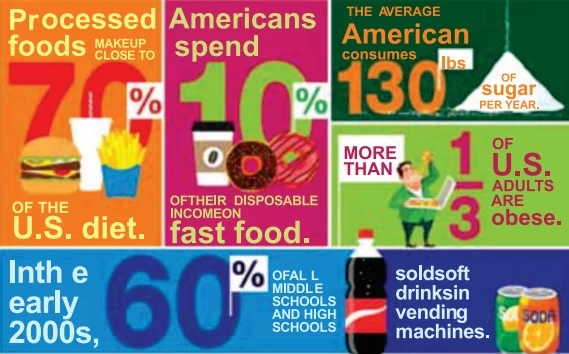
As falas do homem de azul podem ser associadas ao - FAMERP 2022
Inglês - 2022
Examine o cartum de David Sipress, - UNESP 2022/Exatas e Humanas
Inglês - 2022Examine o cartum de David Sipress, publicado no Instagram por CartoonStock, em 13.06.2021.
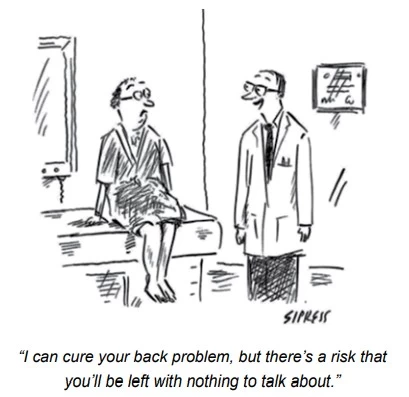
Movement founded by André Breton in 1924 - UNESP 2022/Exatas e Humanas
Inglês - 2022Movement founded by André Breton in 1924, which absorbed the French Dada movement and made positive claims for methods and processes (defiance of logic, shock tactics) which Dada had used merely as a negation of conventional art. Influenced by Freud, it claimed to liberate the riches of the unconscious through the “primacy of dream” and the suspension of conscious control.
According to the text, a) cities - UNESP 2022/Exatas e Humanas
Inglês - 2022Leia o texto para responder às questões de 21 a 27.
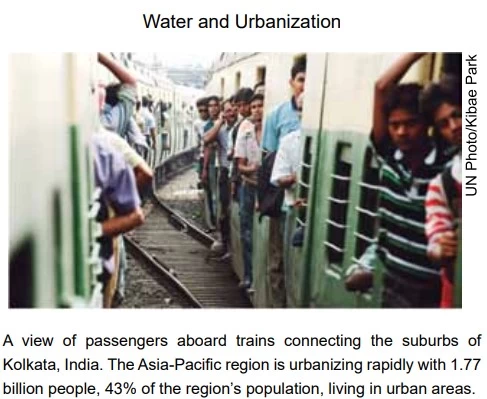
Urban areas are expected to absorb all of the world’s population growth over the next four decades, as well as accommodating significant rural-to-urban migration. The vast majority of these people will be living in overcrowded slums with inadequate, often non-existent, water and sanitation services.
Safe drinking water systems and adequate sanitation that effectively disposes of human waste will be essential to ensure cities and towns grow sustainably. Extending these services to the millions of urbanites currently unserved will play a key role in underpinning the health and security of cities, protecting economies and ecosystems and minimising the risk of pandemics.
For the first time in history, more than half of the global population live in towns and cities. By 2050, that proportion is expected to rise to two-thirds. Population growth is happening fastest in urban areas of less developed regions, with the urban population estimated to grow from 3.9 billion people today to 6.3 billion in 2050.
Even though water and sanitation access rates are generally higher in urban areas than rural, planning and infrastructure have been unable to keep pace in many regions. Today, 700 million urbanites live without improved sanitation, contributing to poor health conditions and heavy pollution loads in wastewater, and 156 million live without improved water sources.
However, cities provide significant opportunities for more integrated and sustainable water use and waste management. The positive impacts of these services, particularly for public health, spread rapidly and costeffectively among densely populated unplanned settlements. Furthermore, more efficient use of water within cities and the safe reuse of more waste will put less strain on the surrounding ecosystems.
(www.unwater.org. Adaptado.)
A fotografia e a sua legenda ilustram o - UNESP 2022/Exatas e Humanas
Inglês - 2022Leia o texto para responder às questões de 21 a 27.

Urban areas are expected to absorb all of the world’s population growth over the next four decades, as well as accommodating significant rural-to-urban migration. The vast majority of these people will be living in overcrowded slums with inadequate, often non-existent, water and sanitation services.
Safe drinking water systems and adequate sanitation that effectively disposes of human waste will be essential to ensure cities and towns grow sustainably. Extending these services to the millions of urbanites currently unserved will play a key role in underpinning the health and security of cities, protecting economies and ecosystems and minimising the risk of pandemics.
For the first time in history, more than half of the global population live in towns and cities. By 2050, that proportion is expected to rise to two-thirds. Population growth is happening fastest in urban areas of less developed regions, with the urban population estimated to grow from 3.9 billion people today to 6.3 billion in 2050.
Even though water and sanitation access rates are generally higher in urban areas than rural, planning and infrastructure have been unable to keep pace in many regions. Today, 700 million urbanites live without improved sanitation, contributing to poor health conditions and heavy pollution loads in wastewater, and 156 million live without improved water sources.
However, cities provide significant opportunities for more integrated and sustainable water use and waste management. The positive impacts of these services, particularly for public health, spread rapidly and costeffectively among densely populated unplanned settlements. Furthermore, more efficient use of water within cities and the safe reuse of more waste will put less strain on the surrounding ecosystems.
(www.unwater.org. Adaptado.)
No trecho do primeiro parágrafo “as well - UNESP 2022/Exatas e Humanas
Inglês - 2022Leia o texto para responder às questões de 21 a 27.

Urban areas are expected to absorb all of the world’s population growth over the next four decades, as well as accommodating significant rural-to-urban migration. The vast majority of these people will be living in overcrowded slums with inadequate, often non-existent, water and sanitation services.
Safe drinking water systems and adequate sanitation that effectively disposes of human waste will be essential to ensure cities and towns grow sustainably. Extending these services to the millions of urbanites currently unserved will play a key role in underpinning the health and security of cities, protecting economies and ecosystems and minimising the risk of pandemics.
For the first time in history, more than half of the global population live in towns and cities. By 2050, that proportion is expected to rise to two-thirds. Population growth is happening fastest in urban areas of less developed regions, with the urban population estimated to grow from 3.9 billion people today to 6.3 billion in 2050.
Even though water and sanitation access rates are generally higher in urban areas than rural, planning and infrastructure have been unable to keep pace in many regions. Today, 700 million urbanites live without improved sanitation, contributing to poor health conditions and heavy pollution loads in wastewater, and 156 million live without improved water sources.
However, cities provide significant opportunities for more integrated and sustainable water use and waste management. The positive impacts of these services, particularly for public health, spread rapidly and costeffectively among densely populated unplanned settlements. Furthermore, more efficient use of water within cities and the safe reuse of more waste will put less strain on the surrounding ecosystems.
(www.unwater.org. Adaptado.)
According to the second paragraph - UNESP 2022/Exatas e Humanas
Inglês - 2022Leia o texto para responder às questões de 21 a 27.

A view of passengers aboard trains connecting the suburbs of Kolkata, India. The Asia-Pacific region is urbanizing rapidly with 1.77 billion people, 43% of the region’s population, living in urban areas.
Urban areas are expected to absorb all of the world’s population growth over the next four decades, as well as accommodating significant rural-to-urban migration. The vast majority of these people will be living in overcrowded slums with inadequate, often non-existent, water and sanitation services.
Safe drinking water systems and adequate sanitation that effectively disposes of human waste will be essential to ensure cities and towns grow sustainably. Extending these services to the millions of urbanites currently unserved will play a key role in underpinning the health and security of cities, protecting economies and ecosystems and minimising the risk of pandemics.
For the first time in history, more than half of the global population live in towns and cities. By 2050, that proportion is expected to rise to two-thirds. Population growth is happening fastest in urban areas of less developed regions, with the urban population estimated to grow from 3.9 billion people today to 6.3 billion in 2050.
Even though water and sanitation access rates are generally higher in urban areas than rural, planning and infrastructure have been unable to keep pace in many regions. Today, 700 million urbanites live without improved sanitation, contributing to poor health conditions and heavy pollution loads in wastewater, and 156 million live without improved water sources.
However, cities provide significant opportunities for more integrated and sustainable water use and waste management. The positive impacts of these services, particularly for public health, spread rapidly and costeffectively among densely populated unplanned settlements. Furthermore, more efficient use of water within cities and the safe reuse of more waste will put less strain on the surrounding ecosystems.
(www.unwater.org. Adaptado.)
De acordo com o terceiro e quarto - UNESP 2022/Exatas e Humanas
Inglês - 2022Leia o texto para responder às questões de 21 a 27.

A view of passengers aboard trains connecting the suburbs of Kolkata, India. The Asia-Pacific region is urbanizing rapidly with 1.77 billion people, 43% of the region’s population, living in urban areas.
Urban areas are expected to absorb all of the world’s population growth over the next four decades, as well as accommodating significant rural-to-urban migration. The vast majority of these people will be living in overcrowded slums with inadequate, often non-existent, water and sanitation services.
Safe drinking water systems and adequate sanitation that effectively disposes of human waste will be essential to ensure cities and towns grow sustainably. Extending these services to the millions of urbanites currently unserved will play a key role in underpinning the health and security of cities, protecting economies and ecosystems and minimising the risk of pandemics.
For the first time in history, more than half of the global population live in towns and cities. By 2050, that proportion is expected to rise to two-thirds. Population growth is happening fastest in urban areas of less developed regions, with the urban population estimated to grow from 3.9 billion people today to 6.3 billion in 2050.
Even though water and sanitation access rates are generally higher in urban areas than rural, planning and infrastructure have been unable to keep pace in many regions. Today, 700 million urbanites live without improved sanitation, contributing to poor health conditions and heavy pollution loads in wastewater, and 156 million live without improved water sources.
However, cities provide significant opportunities for more integrated and sustainable water use and waste management. The positive impacts of these services, particularly for public health, spread rapidly and costeffectively among densely populated unplanned settlements. Furthermore, more efficient use of water within cities and the safe reuse of more waste will put less strain on the surrounding ecosystems.
(www.unwater.org. Adaptado.)
In the excerpt from the fourth - UNESP 2022/Exatas e Humanas
Inglês - 2022Leia o texto para responder às questões de 21 a 27.

A view of passengers aboard trains connecting the suburbs of Kolkata, India. The Asia-Pacific region is urbanizing rapidly with 1.77 billion people, 43% of the region’s population, living in urban areas.
Urban areas are expected to absorb all of the world’s population growth over the next four decades, as well as accommodating significant rural-to-urban migration. The vast majority of these people will be living in overcrowded slums with inadequate, often non-existent, water and sanitation services.
Safe drinking water systems and adequate sanitation that effectively disposes of human waste will be essential to ensure cities and towns grow sustainably. Extending these services to the millions of urbanites currently unserved will play a key role in underpinning the health and security of cities, protecting economies and ecosystems and minimising the risk of pandemics.
For the first time in history, more than half of the global population live in towns and cities. By 2050, that proportion is expected to rise to two-thirds. Population growth is happening fastest in urban areas of less developed regions, with the urban population estimated to grow from 3.9 billion people today to 6.3 billion in 2050.
Even though water and sanitation access rates are generally higher in urban areas than rural, planning and infrastructure have been unable to keep pace in many regions. Today, 700 million urbanites live without improved sanitation, contributing to poor health conditions and heavy pollution loads in wastewater, and 156 million live without improved water sources.
However, cities provide significant opportunities for more integrated and sustainable water use and waste management. The positive impacts of these services, particularly for public health, spread rapidly and costeffectively among densely populated unplanned settlements. Furthermore, more efficient use of water within cities and the safe reuse of more waste will put less strain on the surrounding ecosystems.
(www.unwater.org. Adaptado.)
No trecho do quarto parágrafo, “Even - UNESP 2022/Exatas e Humanas
Inglês - 2022No trecho do quarto parágrafo, “Even though water and sanitation access rates are generally higher in urban areas”, a expressão sublinhada pode ser substituída, sem alteração de sentido, por
No infográfico, a recomendação para - UNESP 2022/Exatas e Humanas
Inglês - 2022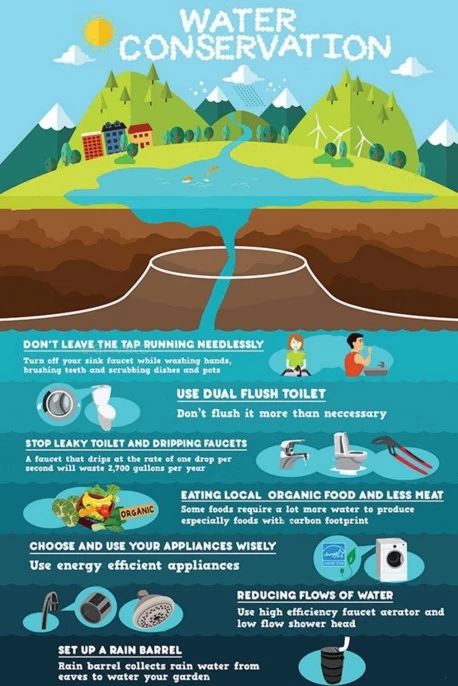
O humor do quadrinho decorre a) da - UNESP 2022/Exatas e Humanas
Inglês - 2022Leia o quadrinho para responder às questões 29 e 30.

O personagem Frank representa a) o homem - UNESP 2022/Exatas e Humanas
Inglês - 2022Leia o quadrinho para responder às questões 29 e 30.

Examine o cartum de Farley Katz, publicado no Instagram - UNIFESP 2022
Inglês - 2022Examine o cartum de Farley Katz, publicado no Instagram da revista The New Yorker em 18.06.2018.

Examine o meme criado a partir de uma cena famosa do - UNIFESP 2022
Inglês - 2022Examine o meme criado a partir de uma cena famosa do filme O sétimo selo, do cineasta sueco Ingmar Bergman.

A publicação do texto no site theconversation.com, na - UNIFESP 2022
Inglês - 2022Leia o texto para responder a questão.
Facebook officials had internal research in March 2020 showing that Instagram — the social media platform most used by adolescents — is harmful to teen girls’ body image and well-being but swept those findings under the rug to continue conducting business as usual, according to a Sept. 14, 2021, Wall Street Journal report.
Facebook’s policy of pursuing profits regardless of documented harm has sparked comparisons to Big Tobacco, which knew in the 1950s that its products were carcinogenic but publicly denied it into the 21st century. Those of us who study social media use in teens didn’t need a suppressed internal research study to know that Instagram can harm teens.
Understanding the impact of social media on teens is important. A Pew Research Center poll shows that 89% of teens report they are online “almost constantly” or several times a day”. Teens are more likely to log on to Instagram than any other social media site. It is a prevalent part of adolescent life. Yet studies consistently show that the more often teens use Instagram, the worse their overall well-being, self-esteem, life satisfaction, mood and body image.
But Instagram isn’t problematic simply because it is popular. There are two key features that seem to make it particularly risky. First, it allows users to follow both celebrities and peers, both of whom can present a manipulated, filtered picture of an unrealistic body along with a highly curated impression of a perfect life. Meanwhile, Facebook has been relegated to the uncool soccer moms and grandparents. For teens, this integration of celebrities and retouched versions of reallife peers presents a ripe environment for upward social comparison, or comparing yourself to someone who is “better” in some respect.
Instagram is also risky for teens because its emphasis on pictures of the body leads users to focus on how their bodies look to others. Being an object for others to view doesn’t help the “selfie generation” feel empowered and sure of themselves — it can do exactly the opposite. These are not insignificant health concerns, because body dissatisfaction during the teen years is a powerful and consistent predictor of later eating disorder symptoms.
Facebook has acknowledged internally what researchers have been documenting for years: Instagram can be harmful to teens. The big question will be how Facebook handles these damaging results. History and the courts have been less than forgiving of the head-inthe-sand approach of Big Tobacco.
(Christia Spears Brown
www.theconversation.com, 16.09.2021. Adaptado.)
Facebook and Big Tobacco have been put side by side in - UNIFESP 2022
Inglês - 2022Leia o texto para responder a questão.
Facebook officials had internal research in March 2020 showing that Instagram — the social media platform most used by adolescents — is harmful to teen girls’ body image and well-being but swept those findings under the rug to continue conducting business as usual, according to a Sept. 14, 2021, Wall Street Journal report.
Facebook’s policy of pursuing profits regardless of documented harm has sparked comparisons to Big Tobacco, which knew in the 1950s that its products were carcinogenic but publicly denied it into the 21st century. Those of us who study social media use in teens didn’t need a suppressed internal research study to know that Instagram can harm teens.
Understanding the impact of social media on teens is important. A Pew Research Center poll shows that 89% of teens report they are online “almost constantly” or several times a day”. Teens are more likely to log on to Instagram than any other social media site. It is a prevalent part of adolescent life. Yet studies consistently show that the more often teens use Instagram, the worse their overall well-being, self-esteem, life satisfaction, mood and body image.
But Instagram isn’t problematic simply because it is popular. There are two key features that seem to make it particularly risky. First, it allows users to follow both celebrities and peers, both of whom can present a manipulated, filtered picture of an unrealistic body along with a highly curated impression of a perfect life. Meanwhile, Facebook has been relegated to the uncool soccer moms and grandparents. For teens, this integration of celebrities and retouched versions of reallife peers presents a ripe environment for upward social comparison, or comparing yourself to someone who is “better” in some respect.
Instagram is also risky for teens because its emphasis on pictures of the body leads users to focus on how their bodies look to others. Being an object for others to view doesn’t help the “selfie generation” feel empowered and sure of themselves — it can do exactly the opposite. These are not insignificant health concerns, because body dissatisfaction during the teen years is a powerful and consistent predictor of later eating disorder symptoms.
Facebook has acknowledged internally what researchers have been documenting for years: Instagram can be harmful to teens. The big question will be how Facebook handles these damaging results. History and the courts have been less than forgiving of the head-inthe-sand approach of Big Tobacco.
(Christia Spears Brown
www.theconversation.com, 16.09.2021. Adaptado.)
On the first line of the second paragraph “Facebook’s - UNIFESP 2022
Inglês - 2022Leia o texto para responder a questão.
Facebook officials had internal research in March 2020 showing that Instagram — the social media platform most used by adolescents — is harmful to teen girls’ body image and well-being but swept those findings under the rug to continue conducting business as usual, according to a Sept. 14, 2021, Wall Street Journal report.
Facebook’s policy of pursuing profits regardless of documented harm has sparked comparisons to Big Tobacco, which knew in the 1950s that its products were carcinogenic but publicly denied it into the 21st century. Those of us who study social media use in teens didn’t need a suppressed internal research study to know that Instagram can harm teens.
Understanding the impact of social media on teens is important. A Pew Research Center poll shows that 89% of teens report they are online “almost constantly” or several times a day”. Teens are more likely to log on to Instagram than any other social media site. It is a prevalent part of adolescent life. Yet studies consistently show that the more often teens use Instagram, the worse their overall well-being, self-esteem, life satisfaction, mood and body image.
But Instagram isn’t problematic simply because it is popular. There are two key features that seem to make it particularly risky. First, it allows users to follow both celebrities and peers, both of whom can present a manipulated, filtered picture of an unrealistic body along with a highly curated impression of a perfect life. Meanwhile, Facebook has been relegated to the uncool soccer moms and grandparents. For teens, this integration of celebrities and retouched versions of reallife peers presents a ripe environment for upward social comparison, or comparing yourself to someone who is “better” in some respect.
Instagram is also risky for teens because its emphasis on pictures of the body leads users to focus on how their bodies look to others. Being an object for others to view doesn’t help the “selfie generation” feel empowered and sure of themselves — it can do exactly the opposite. These are not insignificant health concerns, because body dissatisfaction during the teen years is a powerful and consistent predictor of later eating disorder symptoms.
Facebook has acknowledged internally what researchers have been documenting for years: Instagram can be harmful to teens. The big question will be how Facebook handles these damaging results. History and the courts have been less than forgiving of the head-inthe-sand approach of Big Tobacco.
(Christia Spears Brown
www.theconversation.com, 16.09.2021. Adaptado.)
According to the third paragraph, studies about the - UNIFESP 2022
Inglês - 2022Leia o texto para responder a questão.
Facebook officials had internal research in March 2020 showing that Instagram — the social media platform most used by adolescents — is harmful to teen girls’ body image and well-being but swept those findings under the rug to continue conducting business as usual, according to a Sept. 14, 2021, Wall Street Journal report.
Facebook’s policy of pursuing profits regardless of documented harm has sparked comparisons to Big Tobacco, which knew in the 1950s that its products were carcinogenic but publicly denied it into the 21st century. Those of us who study social media use in teens didn’t need a suppressed internal research study to know that Instagram can harm teens.
Understanding the impact of social media on teens is important. A Pew Research Center poll shows that 89% of teens report they are online “almost constantly” or several times a day”. Teens are more likely to log on to Instagram than any other social media site. It is a prevalent part of adolescent life. Yet studies consistently show that the more often teens use Instagram, the worse their overall well-being, self-esteem, life satisfaction, mood and body image.
But Instagram isn’t problematic simply because it is popular. There are two key features that seem to make it particularly risky. First, it allows users to follow both celebrities and peers, both of whom can present a manipulated, filtered picture of an unrealistic body along with a highly curated impression of a perfect life. Meanwhile, Facebook has been relegated to the uncool soccer moms and grandparents. For teens, this integration of celebrities and retouched versions of reallife peers presents a ripe environment for upward social comparison, or comparing yourself to someone who is “better” in some respect.
Instagram is also risky for teens because its emphasis on pictures of the body leads users to focus on how their bodies look to others. Being an object for others to view doesn’t help the “selfie generation” feel empowered and sure of themselves — it can do exactly the opposite. These are not insignificant health concerns, because body dissatisfaction during the teen years is a powerful and consistent predictor of later eating disorder symptoms.
Facebook has acknowledged internally what researchers have been documenting for years: Instagram can be harmful to teens. The big question will be how Facebook handles these damaging results. History and the courts have been less than forgiving of the head-inthe-sand approach of Big Tobacco.
(Christia Spears Brown
www.theconversation.com, 16.09.2021. Adaptado.)
In the fragment from the third paragraph “Yet studies - UNIFESP 2022
Inglês - 2022Leia o texto para responder a questão.
Facebook officials had internal research in March 2020 showing that Instagram — the social media platform most used by adolescents — is harmful to teen girls’ body image and well-being but swept those findings under the rug to continue conducting business as usual, according to a Sept. 14, 2021, Wall Street Journal report.
Facebook’s policy of pursuing profits regardless of documented harm has sparked comparisons to Big Tobacco, which knew in the 1950s that its products were carcinogenic but publicly denied it into the 21st century. Those of us who study social media use in teens didn’t need a suppressed internal research study to know that Instagram can harm teens.
Understanding the impact of social media on teens is important. A Pew Research Center poll shows that 89% of teens report they are online “almost constantly” or several times a day”. Teens are more likely to log on to Instagram than any other social media site. It is a prevalent part of adolescent life. Yet studies consistently show that the more often teens use Instagram, the worse their overall well-being, self-esteem, life satisfaction, mood and body image.
But Instagram isn’t problematic simply because it is popular. There are two key features that seem to make it particularly risky. First, it allows users to follow both celebrities and peers, both of whom can present a manipulated, filtered picture of an unrealistic body along with a highly curated impression of a perfect life. Meanwhile, Facebook has been relegated to the uncool soccer moms and grandparents. For teens, this integration of celebrities and retouched versions of reallife peers presents a ripe environment for upward social comparison, or comparing yourself to someone who is “better” in some respect.
Instagram is also risky for teens because its emphasis on pictures of the body leads users to focus on how their bodies look to others. Being an object for others to view doesn’t help the “selfie generation” feel empowered and sure of themselves — it can do exactly the opposite. These are not insignificant health concerns, because body dissatisfaction during the teen years is a powerful and consistent predictor of later eating disorder symptoms.
Facebook has acknowledged internally what researchers have been documenting for years: Instagram can be harmful to teens. The big question will be how Facebook handles these damaging results. History and the courts have been less than forgiving of the head-inthe-sand approach of Big Tobacco.
(Christia Spears Brown
www.theconversation.com, 16.09.2021. Adaptado.)
According to the fourth and fifth paragraphs, Instagram - UNIFESP 2022
Inglês - 2022Leia o texto para responder a questão.
Facebook officials had internal research in March 2020 showing that Instagram — the social media platform most used by adolescents — is harmful to teen girls’ body image and well-being but swept those findings under the rug to continue conducting business as usual, according to a Sept. 14, 2021, Wall Street Journal report.
Facebook’s policy of pursuing profits regardless of documented harm has sparked comparisons to Big Tobacco, which knew in the 1950s that its products were carcinogenic but publicly denied it into the 21st century. Those of us who study social media use in teens didn’t need a suppressed internal research study to know that Instagram can harm teens.
Understanding the impact of social media on teens is important. A Pew Research Center poll shows that 89% of teens report they are online “almost constantly” or several times a day”. Teens are more likely to log on to Instagram than any other social media site. It is a prevalent part of adolescent life. Yet studies consistently show that the more often teens use Instagram, the worse their overall well-being, self-esteem, life satisfaction, mood and body image.
But Instagram isn’t problematic simply because it is popular. There are two key features that seem to make it particularly risky. First, it allows users to follow both celebrities and peers, both of whom can present a manipulated, filtered picture of an unrealistic body along with a highly curated impression of a perfect life. Meanwhile, Facebook has been relegated to the uncool soccer moms and grandparents. For teens, this integration of celebrities and retouched versions of reallife peers presents a ripe environment for upward social comparison, or comparing yourself to someone who is “better” in some respect.
Instagram is also risky for teens because its emphasis on pictures of the body leads users to focus on how their bodies look to others. Being an object for others to view doesn’t help the “selfie generation” feel empowered and sure of themselves — it can do exactly the opposite. These are not insignificant health concerns, because body dissatisfaction during the teen years is a powerful and consistent predictor of later eating disorder symptoms.
Facebook has acknowledged internally what researchers have been documenting for years: Instagram can be harmful to teens. The big question will be how Facebook handles these damaging results. History and the courts have been less than forgiving of the head-inthe-sand approach of Big Tobacco.
(Christia Spears Brown
www.theconversation.com, 16.09.2021. Adaptado.)
The last paragraph goes back to the comparison between - UNIFESP 2022
Inglês - 2022Leia o texto para responder a questão.
Facebook officials had internal research in March 2020 showing that Instagram — the social media platform most used by adolescents — is harmful to teen girls’ body image and well-being but swept those findings under the rug to continue conducting business as usual, according to a Sept. 14, 2021, Wall Street Journal report.
Facebook’s policy of pursuing profits regardless of documented harm has sparked comparisons to Big Tobacco, which knew in the 1950s that its products were carcinogenic but publicly denied it into the 21st century. Those of us who study social media use in teens didn’t need a suppressed internal research study to know that Instagram can harm teens.
Understanding the impact of social media on teens is important. A Pew Research Center poll shows that 89% of teens report they are online “almost constantly” or several times a day”. Teens are more likely to log on to Instagram than any other social media site. It is a prevalent part of adolescent life. Yet studies consistently show that the more often teens use Instagram, the worse their overall well-being, self-esteem, life satisfaction, mood and body image.
But Instagram isn’t problematic simply because it is popular. There are two key features that seem to make it particularly risky. First, it allows users to follow both celebrities and peers, both of whom can present a manipulated, filtered picture of an unrealistic body along with a highly curated impression of a perfect life. Meanwhile, Facebook has been relegated to the uncool soccer moms and grandparents. For teens, this integration of celebrities and retouched versions of reallife peers presents a ripe environment for upward social comparison, or comparing yourself to someone who is “better” in some respect.
Instagram is also risky for teens because its emphasis on pictures of the body leads users to focus on how their bodies look to others. Being an object for others to view doesn’t help the “selfie generation” feel empowered and sure of themselves — it can do exactly the opposite. These are not insignificant health concerns, because body dissatisfaction during the teen years is a powerful and consistent predictor of later eating disorder symptoms.
Facebook has acknowledged internally what researchers have been documenting for years: Instagram can be harmful to teens. The big question will be how Facebook handles these damaging results. History and the courts have been less than forgiving of the head-inthe-sand approach of Big Tobacco.
(Christia Spears Brown
www.theconversation.com, 16.09.2021. Adaptado.)
O anúncio contradiz informações no quarto parágrafo do - UNIFESP 2022
Inglês - 2022Leia o texto para responder a questão.
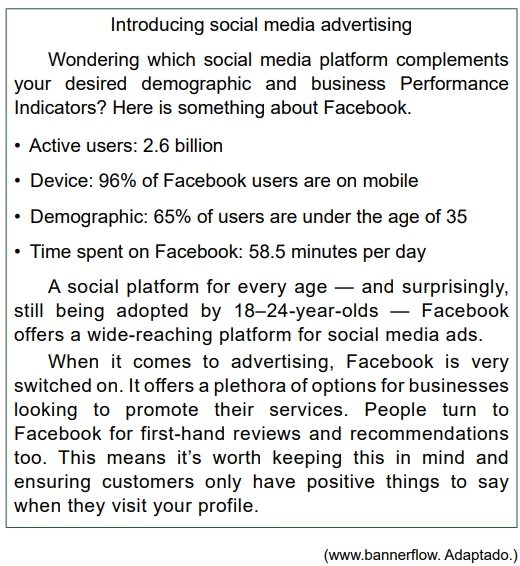
O anúncio contradiz informações no quarto parágrafo do - UNIFESP 2022
Inglês - 2022Leia o texto para responder a questão.

In the last sentence of the ad, the term “ensuring” - UNIFESP 2022
Inglês - 2022Leia o texto para responder a questão.

Leia a tirinha. The question “How’s that bad?”, in the - UNIFESP 2022
Inglês - 2022Leia a tirinha.

No trecho “And the costs of closure are - UNESP 2021/Prova I
Inglês - 2021Analise o gráfico e leia o texto para responder às questões de 25 a 30.

Three-quarters of the world’s children live in countries where classrooms are closed. As lockdowns ease, schools should be among the first places to reopen. Children seem to be less likely than adults to catch covid-19. And the costs of closure are staggering: in the lost productivity of home schooling parents; and, far more important, in the damage done to children by lost learning. The costs fall most heavily on the youngest, who among other things miss out on picking up social and emotional skills; and on the less well-off, who are less likely to attend online lessons and who may be missing meals as well as classes. West African children whose schools were closed during the Ebola epidemic in 2014 are still paying the price.
(www.economist.com, 01.05.2020. Adaptado.)
The first and second paragraphs mainly illustrate a) - UNIFESP 2021
Inglês - 2021Leia o texto para responder a questão.
Remember the good old days, when you could have a heated-yet-enjoyable debate with your friends about things that didn’t matter that much — times when you could be a true fan of the Manchester United soccer team when you didn’t come from the city of Manchester?
How things have changed.
Now disagreements feel deadly serious. Like when your colleague pronounces that wearing a face mask in public is a threat to his liberty. Or when you see that one of your friends has just tweeted that, actually, all lives matter. Before you know it, you’re feeling angry and forming harsh new judgments about your colleagues and friends. Let’s take a collective pause and breathe: there are some ways we can all try to have more civil disagreements in this febrile age of culture wars.
1. ‘Coupling’ and ‘decoupling’
The first is to consider how inclined people are to ‘couple’ or ‘decouple’ topics involving wider political and social factors. Swedish data analyst John Nerst has used the terms to describe the contrasting ways in which people approach contentious issues. Those of us more inclined to ‘couple’ see them as inextricably related to a broader matrix of factors, whereas those more predisposed to ‘decouple’ prefer to consider an issue in isolation. To take a crude example, a decoupler might consider in isolation the question of whether a vaccine provides a degree of immunity to a virus; a coupler, by contrast, would immediately see the issue as inextricably entangled in a mesh of factors, such as pharmaceutical industry power and parental choice.
2. ________________
Most of us are deeply committed to our beliefs, especially concerning moral and social issues, such that when we’re presented with facts that contradict our beliefs, we often choose to dismiss those facts, rather than update our beliefs.
A study at Arizona State University, U.S., analysed more than 100,000 comments on a forum where users post their views on an issue and invite others to persuade them to change their mind. The researchers found that regardless of the kind of topic, people were more likely to change their mind when confronted with more evidencebased arguments. “Our work may suggest that while attitude change is hard-won, providing facts, statistics and citations for one’s arguments can convince people to change their minds,” they concluded.
3. Just be nicer?
Finally, it’s easier said than done, but let’s all try to be more respectful of and attentive to each other’s positions. We should do this not just for virtuous reasons, but because the more we create that kind of a climate, the more open-minded and intellectually flexible we will all be inclined to be. And then hopefully, collectively, we can start having more constructive disagreements — even in our present very difficult times.
(Christian Jarrett. www.bbc.com, 14.10.2020. Adaptado.)
Os trechos “when your colleague pronounces that wearing - UNIFESP 2021
Inglês - 2021Leia o texto para responder a questão.
Remember the good old days, when you could have a heated-yet-enjoyable debate with your friends about things that didn’t matter that much — times when you could be a true fan of the Manchester United soccer team when you didn’t come from the city of Manchester?
How things have changed.
Now disagreements feel deadly serious. Like when your colleague pronounces that wearing a face mask in public is a threat to his liberty. Or when you see that one of your friends has just tweeted that, actually, all lives matter. Before you know it, you’re feeling angry and forming harsh new judgments about your colleagues and friends. Let’s take a collective pause and breathe: there are some ways we can all try to have more civil disagreements in this febrile age of culture wars.
1. ‘Coupling’ and ‘decoupling’
The first is to consider how inclined people are to ‘couple’ or ‘decouple’ topics involving wider political and social factors. Swedish data analyst John Nerst has used the terms to describe the contrasting ways in which people approach contentious issues. Those of us more inclined to ‘couple’ see them as inextricably related to a broader matrix of factors, whereas those more predisposed to ‘decouple’ prefer to consider an issue in isolation. To take a crude example, a decoupler might consider in isolation the question of whether a vaccine provides a degree of immunity to a virus; a coupler, by contrast, would immediately see the issue as inextricably entangled in a mesh of factors, such as pharmaceutical industry power and parental choice.
2. ________________
Most of us are deeply committed to our beliefs, especially concerning moral and social issues, such that when we’re presented with facts that contradict our beliefs, we often choose to dismiss those facts, rather than update our beliefs.
A study at Arizona State University, U.S., analysed more than 100,000 comments on a forum where users post their views on an issue and invite others to persuade them to change their mind. The researchers found that regardless of the kind of topic, people were more likely to change their mind when confronted with more evidencebased arguments. “Our work may suggest that while attitude change is hard-won, providing facts, statistics and citations for one’s arguments can convince people to change their minds,” they concluded.
3. Just be nicer?
Finally, it’s easier said than done, but let’s all try to be more respectful of and attentive to each other’s positions. We should do this not just for virtuous reasons, but because the more we create that kind of a climate, the more open-minded and intellectually flexible we will all be inclined to be. And then hopefully, collectively, we can start having more constructive disagreements — even in our present very difficult times.
(Christian Jarrett. www.bbc.com, 14.10.2020. Adaptado.)
In the fragment from the third paragraph “when you see - UNIFESP 2021
Inglês - 2021Leia o texto para responder a questão.
Remember the good old days, when you could have a heated-yet-enjoyable debate with your friends about things that didn’t matter that much — times when you could be a true fan of the Manchester United soccer team when you didn’t come from the city of Manchester?
How things have changed.
Now disagreements feel deadly serious. Like when your colleague pronounces that wearing a face mask in public is a threat to his liberty. Or when you see that one of your friends has just tweeted that, actually, all lives matter. Before you know it, you’re feeling angry and forming harsh new judgments about your colleagues and friends. Let’s take a collective pause and breathe: there are some ways we can all try to have more civil disagreements in this febrile age of culture wars.
1. ‘Coupling’ and ‘decoupling’
The first is to consider how inclined people are to ‘couple’ or ‘decouple’ topics involving wider political and social factors. Swedish data analyst John Nerst has used the terms to describe the contrasting ways in which people approach contentious issues. Those of us more inclined to ‘couple’ see them as inextricably related to a broader matrix of factors, whereas those more predisposed to ‘decouple’ prefer to consider an issue in isolation. To take a crude example, a decoupler might consider in isolation the question of whether a vaccine provides a degree of immunity to a virus; a coupler, by contrast, would immediately see the issue as inextricably entangled in a mesh of factors, such as pharmaceutical industry power and parental choice.
2. ________________
Most of us are deeply committed to our beliefs, especially concerning moral and social issues, such that when we’re presented with facts that contradict our beliefs, we often choose to dismiss those facts, rather than update our beliefs.
A study at Arizona State University, U.S., analysed more than 100,000 comments on a forum where users post their views on an issue and invite others to persuade them to change their mind. The researchers found that regardless of the kind of topic, people were more likely to change their mind when confronted with more evidencebased arguments. “Our work may suggest that while attitude change is hard-won, providing facts, statistics and citations for one’s arguments can convince people to change their minds,” they concluded.
3. Just be nicer?
Finally, it’s easier said than done, but let’s all try to be more respectful of and attentive to each other’s positions. We should do this not just for virtuous reasons, but because the more we create that kind of a climate, the more open-minded and intellectually flexible we will all be inclined to be. And then hopefully, collectively, we can start having more constructive disagreements — even in our present very difficult times.
(Christian Jarrett. www.bbc.com, 14.10.2020. Adaptado.)
The expression “Before you know it” (3rd paragraph) - UNIFESP 2021
Inglês - 2021Leia o texto para responder a questão.
Remember the good old days, when you could have a heated-yet-enjoyable debate with your friends about things that didn’t matter that much — times when you could be a true fan of the Manchester United soccer team when you didn’t come from the city of Manchester?
How things have changed.
Now disagreements feel deadly serious. Like when your colleague pronounces that wearing a face mask in public is a threat to his liberty. Or when you see that one of your friends has just tweeted that, actually, all lives matter. Before you know it, you’re feeling angry and forming harsh new judgments about your colleagues and friends. Let’s take a collective pause and breathe: there are some ways we can all try to have more civil disagreements in this febrile age of culture wars.
1. ‘Coupling’ and ‘decoupling’
The first is to consider how inclined people are to ‘couple’ or ‘decouple’ topics involving wider political and social factors. Swedish data analyst John Nerst has used the terms to describe the contrasting ways in which people approach contentious issues. Those of us more inclined to ‘couple’ see them as inextricably related to a broader matrix of factors, whereas those more predisposed to ‘decouple’ prefer to consider an issue in isolation. To take a crude example, a decoupler might consider in isolation the question of whether a vaccine provides a degree of immunity to a virus; a coupler, by contrast, would immediately see the issue as inextricably entangled in a mesh of factors, such as pharmaceutical industry power and parental choice.
2. ________________
Most of us are deeply committed to our beliefs, especially concerning moral and social issues, such that when we’re presented with facts that contradict our beliefs, we often choose to dismiss those facts, rather than update our beliefs.
A study at Arizona State University, U.S., analysed more than 100,000 comments on a forum where users post their views on an issue and invite others to persuade them to change their mind. The researchers found that regardless of the kind of topic, people were more likely to change their mind when confronted with more evidencebased arguments. “Our work may suggest that while attitude change is hard-won, providing facts, statistics and citations for one’s arguments can convince people to change their minds,” they concluded.
3. Just be nicer?
Finally, it’s easier said than done, but let’s all try to be more respectful of and attentive to each other’s positions. We should do this not just for virtuous reasons, but because the more we create that kind of a climate, the more open-minded and intellectually flexible we will all be inclined to be. And then hopefully, collectively, we can start having more constructive disagreements — even in our present very difficult times.
(Christian Jarrett. www.bbc.com, 14.10.2020. Adaptado.)
In the fragment from the fourth paragraph “Those of us - UNIFESP 2021
Inglês - 2021Leia o texto para responder a questão.
Remember the good old days, when you could have a heated-yet-enjoyable debate with your friends about things that didn’t matter that much — times when you could be a true fan of the Manchester United soccer team when you didn’t come from the city of Manchester?
How things have changed.
Now disagreements feel deadly serious. Like when your colleague pronounces that wearing a face mask in public is a threat to his liberty. Or when you see that one of your friends has just tweeted that, actually, all lives matter. Before you know it, you’re feeling angry and forming harsh new judgments about your colleagues and friends. Let’s take a collective pause and breathe: there are some ways we can all try to have more civil disagreements in this febrile age of culture wars.
1. ‘Coupling’ and ‘decoupling’
The first is to consider how inclined people are to ‘couple’ or ‘decouple’ topics involving wider political and social factors. Swedish data analyst John Nerst has used the terms to describe the contrasting ways in which people approach contentious issues. Those of us more inclined to ‘couple’ see them as inextricably related to a broader matrix of factors, whereas those more predisposed to ‘decouple’ prefer to consider an issue in isolation. To take a crude example, a decoupler might consider in isolation the question of whether a vaccine provides a degree of immunity to a virus; a coupler, by contrast, would immediately see the issue as inextricably entangled in a mesh of factors, such as pharmaceutical industry power and parental choice.
2. ________________
Most of us are deeply committed to our beliefs, especially concerning moral and social issues, such that when we’re presented with facts that contradict our beliefs, we often choose to dismiss those facts, rather than update our beliefs.
A study at Arizona State University, U.S., analysed more than 100,000 comments on a forum where users post their views on an issue and invite others to persuade them to change their mind. The researchers found that regardless of the kind of topic, people were more likely to change their mind when confronted with more evidencebased arguments. “Our work may suggest that while attitude change is hard-won, providing facts, statistics and citations for one’s arguments can convince people to change their minds,” they concluded.
3. Just be nicer?
Finally, it’s easier said than done, but let’s all try to be more respectful of and attentive to each other’s positions. We should do this not just for virtuous reasons, but because the more we create that kind of a climate, the more open-minded and intellectually flexible we will all be inclined to be. And then hopefully, collectively, we can start having more constructive disagreements — even in our present very difficult times.
(Christian Jarrett. www.bbc.com, 14.10.2020. Adaptado.)
No trecho do quarto parágrafo “whereas those more - UNIFESP 2021
Inglês - 2021Leia o texto para responder a questão.
Remember the good old days, when you could have a heated-yet-enjoyable debate with your friends about things that didn’t matter that much — times when you could be a true fan of the Manchester United soccer team when you didn’t come from the city of Manchester?
How things have changed.
Now disagreements feel deadly serious. Like when your colleague pronounces that wearing a face mask in public is a threat to his liberty. Or when you see that one of your friends has just tweeted that, actually, all lives matter. Before you know it, you’re feeling angry and forming harsh new judgments about your colleagues and friends. Let’s take a collective pause and breathe: there are some ways we can all try to have more civil disagreements in this febrile age of culture wars.
1. ‘Coupling’ and ‘decoupling’
The first is to consider how inclined people are to ‘couple’ or ‘decouple’ topics involving wider political and social factors. Swedish data analyst John Nerst has used the terms to describe the contrasting ways in which people approach contentious issues. Those of us more inclined to ‘couple’ see them as inextricably related to a broader matrix of factors, whereas those more predisposed to ‘decouple’ prefer to consider an issue in isolation. To take a crude example, a decoupler might consider in isolation the question of whether a vaccine provides a degree of immunity to a virus; a coupler, by contrast, would immediately see the issue as inextricably entangled in a mesh of factors, such as pharmaceutical industry power and parental choice.
2. ________________
Most of us are deeply committed to our beliefs, especially concerning moral and social issues, such that when we’re presented with facts that contradict our beliefs, we often choose to dismiss those facts, rather than update our beliefs.
A study at Arizona State University, U.S., analysed more than 100,000 comments on a forum where users post their views on an issue and invite others to persuade them to change their mind. The researchers found that regardless of the kind of topic, people were more likely to change their mind when confronted with more evidencebased arguments. “Our work may suggest that while attitude change is hard-won, providing facts, statistics and citations for one’s arguments can convince people to change their minds,” they concluded.
3. Just be nicer?
Finally, it’s easier said than done, but let’s all try to be more respectful of and attentive to each other’s positions. We should do this not just for virtuous reasons, but because the more we create that kind of a climate, the more open-minded and intellectually flexible we will all be inclined to be. And then hopefully, collectively, we can start having more constructive disagreements — even in our present very difficult times.
(Christian Jarrett. www.bbc.com, 14.10.2020. Adaptado.)
The subtitle that most closely represents the content - UNIFESP 2021
Inglês - 2021Leia o texto para responder a questão.
Remember the good old days, when you could have a heated-yet-enjoyable debate with your friends about things that didn’t matter that much — times when you could be a true fan of the Manchester United soccer team when you didn’t come from the city of Manchester?
How things have changed.
Now disagreements feel deadly serious. Like when your colleague pronounces that wearing a face mask in public is a threat to his liberty. Or when you see that one of your friends has just tweeted that, actually, all lives matter. Before you know it, you’re feeling angry and forming harsh new judgments about your colleagues and friends. Let’s take a collective pause and breathe: there are some ways we can all try to have more civil disagreements in this febrile age of culture wars.
1. ‘Coupling’ and ‘decoupling’
The first is to consider how inclined people are to ‘couple’ or ‘decouple’ topics involving wider political and social factors. Swedish data analyst John Nerst has used the terms to describe the contrasting ways in which people approach contentious issues. Those of us more inclined to ‘couple’ see them as inextricably related to a broader matrix of factors, whereas those more predisposed to ‘decouple’ prefer to consider an issue in isolation. To take a crude example, a decoupler might consider in isolation the question of whether a vaccine provides a degree of immunity to a virus; a coupler, by contrast, would immediately see the issue as inextricably entangled in a mesh of factors, such as pharmaceutical industry power and parental choice.
2. ________________
Most of us are deeply committed to our beliefs, especially concerning moral and social issues, such that when we’re presented with facts that contradict our beliefs, we often choose to dismiss those facts, rather than update our beliefs.
A study at Arizona State University, U.S., analysed more than 100,000 comments on a forum where users post their views on an issue and invite others to persuade them to change their mind. The researchers found that regardless of the kind of topic, people were more likely to change their mind when confronted with more evidencebased arguments. “Our work may suggest that while attitude change is hard-won, providing facts, statistics and citations for one’s arguments can convince people to change their minds,” they concluded.
3. Just be nicer?
Finally, it’s easier said than done, but let’s all try to be more respectful of and attentive to each other’s positions. We should do this not just for virtuous reasons, but because the more we create that kind of a climate, the more open-minded and intellectually flexible we will all be inclined to be. And then hopefully, collectively, we can start having more constructive disagreements — even in our present very difficult times.
(Christian Jarrett. www.bbc.com, 14.10.2020. Adaptado.)
No trecho do último parágrafo “we will all be inclined - UNIFESP 2021
Inglês - 2021Leia o texto para responder a questão.
Remember the good old days, when you could have a heated-yet-enjoyable debate with your friends about things that didn’t matter that much — times when you could be a true fan of the Manchester United soccer team when you didn’t come from the city of Manchester?
How things have changed.
Now disagreements feel deadly serious. Like when your colleague pronounces that wearing a face mask in public is a threat to his liberty. Or when you see that one of your friends has just tweeted that, actually, all lives matter. Before you know it, you’re feeling angry and forming harsh new judgments about your colleagues and friends. Let’s take a collective pause and breathe: there are some ways we can all try to have more civil disagreements in this febrile age of culture wars.
1. ‘Coupling’ and ‘decoupling’
The first is to consider how inclined people are to ‘couple’ or ‘decouple’ topics involving wider political and social factors. Swedish data analyst John Nerst has used the terms to describe the contrasting ways in which people approach contentious issues. Those of us more inclined to ‘couple’ see them as inextricably related to a broader matrix of factors, whereas those more predisposed to ‘decouple’ prefer to consider an issue in isolation. To take a crude example, a decoupler might consider in isolation the question of whether a vaccine provides a degree of immunity to a virus; a coupler, by contrast, would immediately see the issue as inextricably entangled in a mesh of factors, such as pharmaceutical industry power and parental choice.
2. ________________
Most of us are deeply committed to our beliefs, especially concerning moral and social issues, such that when we’re presented with facts that contradict our beliefs, we often choose to dismiss those facts, rather than update our beliefs.
A study at Arizona State University, U.S., analysed more than 100,000 comments on a forum where users post their views on an issue and invite others to persuade them to change their mind. The researchers found that regardless of the kind of topic, people were more likely to change their mind when confronted with more evidencebased arguments. “Our work may suggest that while attitude change is hard-won, providing facts, statistics and citations for one’s arguments can convince people to change their minds,” they concluded.
3. Just be nicer?
Finally, it’s easier said than done, but let’s all try to be more respectful of and attentive to each other’s positions. We should do this not just for virtuous reasons, but because the more we create that kind of a climate, the more open-minded and intellectually flexible we will all be inclined to be. And then hopefully, collectively, we can start having more constructive disagreements — even in our present very difficult times.
(Christian Jarrett. www.bbc.com, 14.10.2020. Adaptado.)
It is an explicit opinion by the author of the text: a) - UNIFESP 2021
Inglês - 2021Leia o texto para responder a questão.
Remember the good old days, when you could have a heated-yet-enjoyable debate with your friends about things that didn’t matter that much — times when you could be a true fan of the Manchester United soccer team when you didn’t come from the city of Manchester?
How things have changed.
Now disagreements feel deadly serious. Like when your colleague pronounces that wearing a face mask in public is a threat to his liberty. Or when you see that one of your friends has just tweeted that, actually, all lives matter. Before you know it, you’re feeling angry and forming harsh new judgments about your colleagues and friends. Let’s take a collective pause and breathe: there are some ways we can all try to have more civil disagreements in this febrile age of culture wars.
1. ‘Coupling’ and ‘decoupling’
The first is to consider how inclined people are to ‘couple’ or ‘decouple’ topics involving wider political and social factors. Swedish data analyst John Nerst has used the terms to describe the contrasting ways in which people approach contentious issues. Those of us more inclined to ‘couple’ see them as inextricably related to a broader matrix of factors, whereas those more predisposed to ‘decouple’ prefer to consider an issue in isolation. To take a crude example, a decoupler might consider in isolation the question of whether a vaccine provides a degree of immunity to a virus; a coupler, by contrast, would immediately see the issue as inextricably entangled in a mesh of factors, such as pharmaceutical industry power and parental choice.
2. ________________
Most of us are deeply committed to our beliefs, especially concerning moral and social issues, such that when we’re presented with facts that contradict our beliefs, we often choose to dismiss those facts, rather than update our beliefs.
A study at Arizona State University, U.S., analysed more than 100,000 comments on a forum where users post their views on an issue and invite others to persuade them to change their mind. The researchers found that regardless of the kind of topic, people were more likely to change their mind when confronted with more evidencebased arguments. “Our work may suggest that while attitude change is hard-won, providing facts, statistics and citations for one’s arguments can convince people to change their minds,” they concluded.
3. Just be nicer?
Finally, it’s easier said than done, but let’s all try to be more respectful of and attentive to each other’s positions. We should do this not just for virtuous reasons, but because the more we create that kind of a climate, the more open-minded and intellectually flexible we will all be inclined to be. And then hopefully, collectively, we can start having more constructive disagreements — even in our present very difficult times.
(Christian Jarrett. www.bbc.com, 14.10.2020. Adaptado.)
As long as it operated as a cheap factory, China - UNESP 2021/Prova I
Inglês - 2021As long as it operated as a cheap factory, China’s growth was welcomed by the US, and its emergence as a new market for consumer goods was eagerly anticipated. However, in the mid-2010s the relationship between the rising nation and the incumbent superpower became more competitive. With the election in 2016 of Donald Trump on an “America First” platform, the gloves came off. Unhappy with the trade imbalance, the US president kicked off a trade war in 2018. The fallout for companies has been considerable.
A afirmação da figura que melhor dialoga com o conteúdo - UNIFESP 2021
Inglês - 2021Leia o texto para responder a questão.
Remember the good old days, when you could have a heated-yet-enjoyable debate with your friends about things that didn’t matter that much — times when you could be a true fan of the Manchester United soccer team when you didn’t come from the city of Manchester?
How things have changed.
Now disagreements feel deadly serious. Like when your colleague pronounces that wearing a face mask in public is a threat to his liberty. Or when you see that one of your friends has just tweeted that, actually, all lives matter. Before you know it, you’re feeling angry and forming harsh new judgments about your colleagues and friends. Let’s take a collective pause and breathe: there are some ways we can all try to have more civil disagreements in this febrile age of culture wars.
1. ‘Coupling’ and ‘decoupling’
The first is to consider how inclined people are to ‘couple’ or ‘decouple’ topics involving wider political and social factors. Swedish data analyst John Nerst has used the terms to describe the contrasting ways in which people approach contentious issues. Those of us more inclined to ‘couple’ see them as inextricably related to a broader matrix of factors, whereas those more predisposed to ‘decouple’ prefer to consider an issue in isolation. To take a crude example, a decoupler might consider in isolation the question of whether a vaccine provides a degree of immunity to a virus; a coupler, by contrast, would immediately see the issue as inextricably entangled in a mesh of factors, such as pharmaceutical industry power and parental choice.
2. ________________
Most of us are deeply committed to our beliefs, especially concerning moral and social issues, such that when we’re presented with facts that contradict our beliefs, we often choose to dismiss those facts, rather than update our beliefs.
A study at Arizona State University, U.S., analysed more than 100,000 comments on a forum where users post their views on an issue and invite others to persuade them to change their mind. The researchers found that regardless of the kind of topic, people were more likely to change their mind when confronted with more evidencebased arguments. “Our work may suggest that while attitude change is hard-won, providing facts, statistics and citations for one’s arguments can convince people to change their minds,” they concluded.
3. Just be nicer?
Finally, it’s easier said than done, but let’s all try to be more respectful of and attentive to each other’s positions. We should do this not just for virtuous reasons, but because the more we create that kind of a climate, the more open-minded and intellectually flexible we will all be inclined to be. And then hopefully, collectively, we can start having more constructive disagreements — even in our present very difficult times.
(Christian Jarrett. www.bbc.com, 14.10.2020. Adaptado.)
The phenomenon E-democracy [electronic democracy] - UNESP 2021/Prova I
Inglês - 2021The phenomenon E-democracy [electronic democracy] is well known and well used in Sweden. E-democracy is a solution that makes it easier for the population to vote or to participate in different questions, or just to make themselves heard. E-democracy is used a lot of municipalities as a simple way for the inhabitants to participate in the local debate. E-democracy is often argued as a tool that makes participation ,more available for everyone.
Segundo o texto, conhecer a composição de elementos - FUVEST 2021
Inglês - 2021 As astronomers gaze into the depths of space, they do so with
unease: They don't know precisely what the universe is made of.
Surprisingly, no one knows the stars' exact chemical
composition: how many carbon, nitrogen and oxygen atoms
[5] they have relative to hydrogen, the most common element.
These numbers are crucial, because they affect how stars
live and die, what types of planets form and even how readily
life might arise on other world's.
Twenty years ago, astronomers expressed confidence in the
[10] numbers they had been working with. Now, not so much. The
problem lies not in the far corners of the cosmos, but much
closer to home. Astonishingly, scientists don't know exactly
what the sun is made of. As a result, they don't know what the
other stars are made of, either.
[15] “The sun is a fundamental yardstick,” says Martin Asplund,
an astrophysicist at the Max Planck Institute for Astrophysics, in
Germany. “When we determine the abundance of a certain
element in a star or a galaxy or a gas cloud anywhere in the
universe, we use the sun as a reference point.”
[20] The sun's location in the Milky Way also makes it a good
representative of the entire galaxy. Most stars reside in giant
galaxies like the Milky Way, which makes the sun a touchstone
for the entire cosmos.
For nearly a century, astronomers have judged stars normal
[25] or not by seeing whether their chemical compositions match the
sun's. Most stars near us do; some don't.
No texto, o astrofísico Martin Asplund emprega a frase - FUVEST 2021
Inglês - 2021 As astronomers gaze into the depths of space, they do so with
unease: They don't know precisely what the universe is made of.
Surprisingly, no one knows the stars' exact chemical
composition: how many carbon, nitrogen and oxygen atoms
[5] they have relative to hydrogen, the most common element.
These numbers are crucial, because they affect how stars
live and die, what types of planets form and even how readily
life might arise on other world's.
Twenty years ago, astronomers expressed confidence in the
[10] numbers they had been working with. Now, not so much. The
problem lies not in the far corners of the cosmos, but much
closer to home. Astonishingly, scientists don't know exactly
what the sun is made of. As a result, they don't know what the
other stars are made of, either.
[15] “The sun is a fundamental yardstick,” says Martin Asplund,
an astrophysicist at the Max Planck Institute for Astrophysics, in
Germany. “When we determine the abundance of a certain
element in a star or a galaxy or a gas cloud anywhere in the
universe, we use the sun as a reference point.”
[20] The sun's location in the Milky Way also makes it a good
representative of the entire galaxy. Most stars reside in giant
galaxies like the Milky Way, which makes the sun a touchstone
for the entire cosmos.
For nearly a century, astronomers have judged stars normal
[25] or not by seeing whether their chemical compositions match the
sun's. Most stars near us do; some don't.
Conforme o texto, um critério tradicionalmente utilizado - FUVEST 2021
Inglês - 2021 As astronomers gaze into the depths of space, they do so with
unease: They don't know precisely what the universe is made of.
Surprisingly, no one knows the stars' exact chemical
composition: how many carbon, nitrogen and oxygen atoms
[5] they have relative to hydrogen, the most common element.
These numbers are crucial, because they affect how stars
live and die, what types of planets form and even how readily
life might arise on other world's.
Twenty years ago, astronomers expressed confidence in the
[10] numbers they had been working with. Now, not so much. The
problem lies not in the far corners of the cosmos, but much
closer to home. Astonishingly, scientists don't know exactly
what the sun is made of. As a result, they don't know what the
other stars are made of, either.
[15] “The sun is a fundamental yardstick,” says Martin Asplund,
an astrophysicist at the Max Planck Institute for Astrophysics, in
Germany. “When we determine the abundance of a certain
element in a star or a galaxy or a gas cloud anywhere in the
universe, we use the sun as a reference point.”
[20] The sun's location in the Milky Way also makes it a good
representative of the entire galaxy. Most stars reside in giant
galaxies like the Milky Way, which makes the sun a touchstone
for the entire cosmos.
For nearly a century, astronomers have judged stars normal
[25] or not by seeing whether their chemical compositions match the
sun's. Most stars near us do; some don't.
Conforme o texto, um aspecto associado ao caráter efêmero -FUVEST 2021
Inglês - 2021 I knew TikTok existed, but I didn’t fully understand
what it was until a few months ago. I also realized that
something radical, yet largely invisible, is happening on
the internet – with implications we still don't understand.
When I was growing up, I took it for granted that the
people who became famous enough to be listened to by a
crowd had worked hard for that accolade and generally
operated with the support of an institution or an
established industry.
The idea that I, as a teenager in my bedroom, might
suddenly communicate with 100,000 people or more,
would have seemed bizarre.
Today’s kids no longer see life in these hierarchical and
institutional terms. Yes, their physical worlds are often
constrained by parental controls, a lack of access to the
outdoors and insane over-scheduling.
But despite that (or, more accurately, in reaction to
that), they see the internet as a constantly evolving
frontier, where it is still possible for a bold and lucky
pioneer to grab some land or find a voice. Most voices
on the internet never travel beyond a relatively small
network, and much of the content that goes viral on
platforms such as TikTok, YouTube or Instagram does so
because of unseen institutions at work (for example, a
public relations team aiming to boost a celebrity’s profile).
Fame can suddenly appear – and then just as suddenly
be taken away again, because the audience gets bored,
the platform’s algorithms change or the cultural trend
that a breakout video has tapped into goes out of fashion.
For a teenager, social media can seem like a summer
garden at dusk filled with fireflies: spots of lights suddenly
flare up and then die down, moving in an unpredictable,
capricious display.
Is this a bad thing? We will not know for several years.
No texto, a referência a um jardim de verão ao entardecer -FUVEST 2021
Inglês - 2021 I knew TikTok existed, but I didn’t fully understand
what it was until a few months ago. I also realized that
something radical, yet largely invisible, is happening on
the internet – with implications we still don't understand.
When I was growing up, I took it for granted that the
people who became famous enough to be listened to by a
crowd had worked hard for that accolade and generally
operated with the support of an institution or an
established industry.
The idea that I, as a teenager in my bedroom, might
suddenly communicate with 100,000 people or more,
would have seemed bizarre.
Today’s kids no longer see life in these hierarchical and
institutional terms. Yes, their physical worlds are often
constrained by parental controls, a lack of access to the
outdoors and insane over-scheduling.
But despite that (or, more accurately, in reaction to
that), they see the internet as a constantly evolving
frontier, where it is still possible for a bold and lucky
pioneer to grab some land or find a voice. Most voices
on the internet never travel beyond a relatively small
network, and much of the content that goes viral on
platforms such as TikTok, YouTube or Instagram does so
because of unseen institutions at work (for example, a
public relations team aiming to boost a celebrity’s profile).
Fame can suddenly appear – and then just as suddenly
be taken away again, because the audience gets bored,
the platform’s algorithms change or the cultural trend
that a breakout video has tapped into goes out of fashion.
For a teenager, social media can seem like a summer
garden at dusk filled with fireflies: spots of lights suddenly
flare up and then die down, moving in an unpredictable,
capricious display.
Is this a bad thing? We will not know for several years.
I ain’t gonna work on Maggie’s farm no more - FUVEST 2021
Inglês - 2021 I ain’t gonna work on Maggie’s farm no more
I ain’t gonna work on Maggie’s farm no more
Well, I wake up in the morning
Fold my hands and pray for rain
I got a head full of ideas
That are drivin’ me insane
It’s a shame the way she makes me scrub the floor
I ain’t gonna work on Maggie’s farm no more
I ain’t gonna work for Maggie’s brother no more
I ain’t gonna work for Maggie’s brother no more
Well, he hands you a nickel
He hands you a dime
He asks you with a grin
If you’re havin’ a good time
Then he fines you every time you slam the door
I ain’t gonna work for Maggie’s brother no more
I ain’t gonna work for Maggie’s pa no more
No, I ain’t gonna work for Maggie’s pa no more
Well, he puts his cigar out in your face just for kicks
His bedroom window it is made out of bricks
The National Guard stands around his door
Ah, I ain’t gonna work for Maggie’s pa no more, alright
Para que a história tivesse um desfecho - UNESP 2021/Prova II
Inglês - 2021Examine a tira de Alex Culang e Raynato Castro.
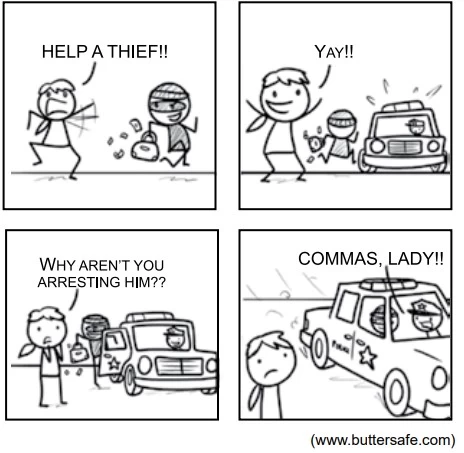
A alternativa que melhor expressa a ideia contida em cada -FUVEST 2021
Inglês - 2021Leia os provérbios:
1. Don’t count your chickens before they lay eggs.
2. Don’t bite the hand that feeds you.
3. Every cloud has a silver lining.
Examine a anedota publicada pela comunidade “The - UNESP 2021/Prova II
Inglês - 2021Examine a anedota publicada pela comunidade “The Language Nerds” em sua conta no Facebook em 22.01.2020.
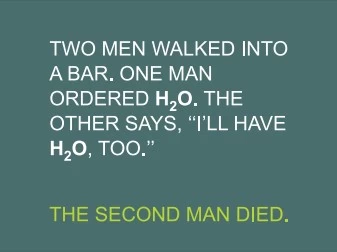
Examine o cartum de Sofia Warren, publicado em - UNESP 2021/Prova II
Inglês - 2021Examine o cartum de Sofia Warren, publicado em sua conta no Instagram em 09.03.2020.
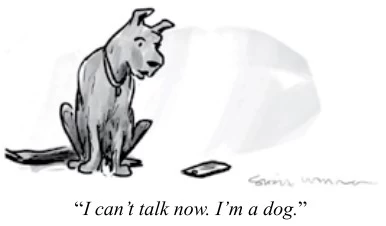
According to the first paragraph, the Amazon - UNESP 2021/Prova II
Inglês - 2021Leia o texto para responder às questões de 21 a 24.
When will the Amazon hit a tipping point?

Scientists say climate change, deforestation and fires could cause the world’s largest rainforest to dry out. The big question is how soon that might happen. Seen from a monitoring tower above the treetops near Manaus, in the Brazilian Amazon, the rainforest canopy stretches to the horizon as an endless sea of green. It looks like a rich and healthy ecosystem, but appearances are deceiving. This rainforest — which holds 16,000 separate tree species — is slowly drying out.
Over the past century, the average temperature in the forest has risen by 1-1.5 °C. In some parts, the dry season has expanded during the past 50 years, from four months to almost five. Severe droughts have hit three times since 2005. That’s all driving a shift in vegetation. In 2018, a study reported that trees that do best in moist conditions, such as tropical legumes from the genus Inga, are dying. Those adapted to drier climes, such as the Brazil nut tree (Bertholletia excelsa), are thriving.
At the same time, large parts of the Amazon, the world’s largest rainforest, are being cut down and burnt. Tree clearing has already shrunk the forest by around 15% from its 1970s extent of more than 6 million square kilometres; in Brazil, which contains more than half the forest, more than 19% has disappeared. Last year, deforestation in Brazil spiked by around 30% to almost 10,000 km2, the largest loss in a decade. And in August 2019, videos of wildfires in the Amazon made international headlines. The number of fires that month was the highest for any August since an extreme drought in 2010.
(www.nature.com, 25.02.2020. Adaptado.)
According to the second paragraph, a change in - UNESP 2021/Prova II
Inglês - 2021Leia o texto para responder às questões de 21 a 24.
When will the Amazon hit a tipping point?

Scientists say climate change, deforestation and fires could cause the world’s largest rainforest to dry out. The big question is how soon that might happen. Seen from a monitoring tower above the treetops near Manaus, in the Brazilian Amazon, the rainforest canopy stretches to the horizon as an endless sea of green. It looks like a rich and healthy ecosystem, but appearances are deceiving. This rainforest — which holds 16,000 separate tree species — is slowly drying out.
Over the past century, the average temperature in the forest has risen by 1-1.5 °C. In some parts, the dry season has expanded during the past 50 years, from four months to almost five. Severe droughts have hit three times since 2005. That’s all driving a shift in vegetation. In 2018, a study reported that trees that do best in moist conditions, such as tropical legumes from the genus Inga, are dying. Those adapted to drier climes, such as the Brazil nut tree (Bertholletia excelsa), are thriving.
At the same time, large parts of the Amazon, the world’s largest rainforest, are being cut down and burnt. Tree clearing has already shrunk the forest by around 15% from its 1970s extent of more than 6 million square kilometres; in Brazil, which contains more than half the forest, more than 19% has disappeared. Last year, deforestation in Brazil spiked by around 30% to almost 10,000 km2, the largest loss in a decade. And in August 2019, videos of wildfires in the Amazon made international headlines. The number of fires that month was the highest for any August since an extreme drought in 2010.
(www.nature.com, 25.02.2020. Adaptado.)
De acordo com o terceiro parágrafo, a Floresta - UNESP 2021/Prova II
Inglês - 2021Leia o texto para responder às questões de 21 a 24.
When will the Amazon hit a tipping point?

Scientists say climate change, deforestation and fires could cause the world’s largest rainforest to dry out. The big question is how soon that might happen. Seen from a monitoring tower above the treetops near Manaus, in the Brazilian Amazon, the rainforest canopy stretches to the horizon as an endless sea of green. It looks like a rich and healthy ecosystem, but appearances are deceiving. This rainforest — which holds 16,000 separate tree species — is slowly drying out.
Over the past century, the average temperature in the forest has risen by 1-1.5 °C. In some parts, the dry season has expanded during the past 50 years, from four months to almost five. Severe droughts have hit three times since 2005. That’s all driving a shift in vegetation. In 2018, a study reported that trees that do best in moist conditions, such as tropical legumes from the genus Inga, are dying. Those adapted to drier climes, such as the Brazil nut tree (Bertholletia excelsa), are thriving.
At the same time, large parts of the Amazon, the world’s largest rainforest, are being cut down and burnt. Tree clearing has already shrunk the forest by around 15% from its 1970s extent of more than 6 million square kilometres; in Brazil, which contains more than half the forest, more than 19% has disappeared. Last year, deforestation in Brazil spiked by around 30% to almost 10,000 km2, the largest loss in a decade. And in August 2019, videos of wildfires in the Amazon made international headlines. The number of fires that month was the highest for any August since an extreme drought in 2010.
(www.nature.com, 25.02.2020. Adaptado.)
O cartum ilustra que o aumento de temperatura - UNESP 2021/Prova II
Inglês - 2021Leia o texto para responder às questões de 21 a 24.
When will the Amazon hit a tipping point?

Scientists say climate change, deforestation and fires could cause the world’s largest rainforest to dry out. The big question is how soon that might happen. Seen from a monitoring tower above the treetops near Manaus, in the Brazilian Amazon, the rainforest canopy stretches to the horizon as an endless sea of green. It looks like a rich and healthy ecosystem, but appearances are deceiving. This rainforest — which holds 16,000 separate tree species — is slowly drying out.
Over the past century, the average temperature in the forest has risen by 1-1.5 °C. In some parts, the dry season has expanded during the past 50 years, from four months to almost five. Severe droughts have hit three times since 2005. That’s all driving a shift in vegetation. In 2018, a study reported that trees that do best in moist conditions, such as tropical legumes from the genus Inga, are dying. Those adapted to drier climes, such as the Brazil nut tree (Bertholletia excelsa), are thriving.
At the same time, large parts of the Amazon, the world’s largest rainforest, are being cut down and burnt. Tree clearing has already shrunk the forest by around 15% from its 1970s extent of more than 6 million square kilometres; in Brazil, which contains more than half the forest, more than 19% has disappeared. Last year, deforestation in Brazil spiked by around 30% to almost 10,000 km2, the largest loss in a decade. And in August 2019, videos of wildfires in the Amazon made international headlines. The number of fires that month was the highest for any August since an extreme drought in 2010.
(www.nature.com, 25.02.2020. Adaptado.)
De acordo com o cartum, a) o desmatador - UNESP 2021/Prova II
Inglês - 2021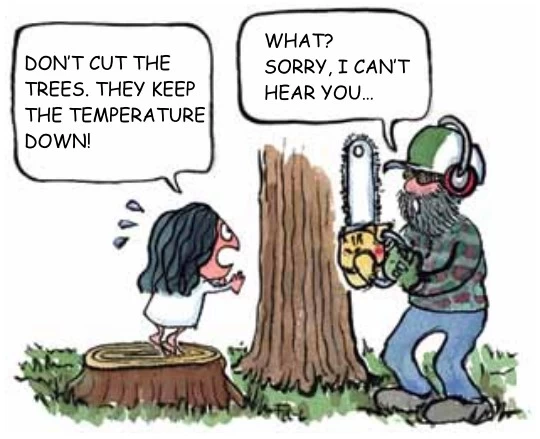
O retângulo destacado no mapa e seu texto - UNESP 2021/Prova II
Inglês - 2021Analise o mapa para responder às questões de 26 a 28.
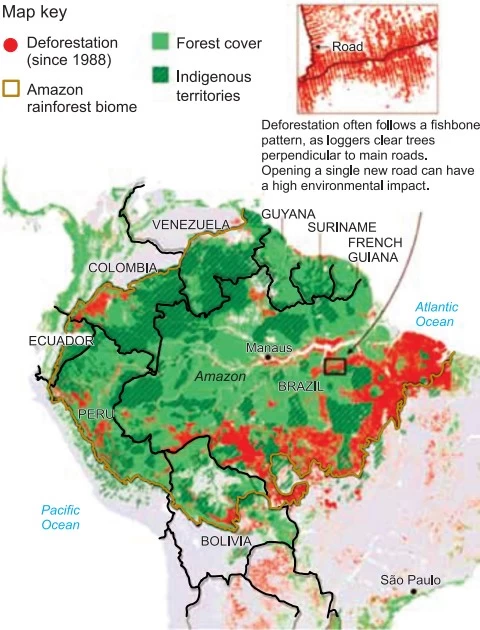
(www.nature.com, 25.02.2020.)
The country covered by the Amazon rainforest - UNESP 2021/Prova II
Inglês - 2021Analise o mapa para responder às questões de 26 a 28.

(www.nature.com, 25.02.2020.)
In the excerpt “Deforestation often follows a - UNESP 2021/Prova II
Inglês - 2021Analise o mapa para responder às questões de 26 a 28.

(www.nature.com, 25.02.2020.)
The United Nations (UN) publication mentioned in - UNESP 2021/Prova II
Inglês - 2021Leia o texto para responder às questões 29 e 30.
The business of climate change
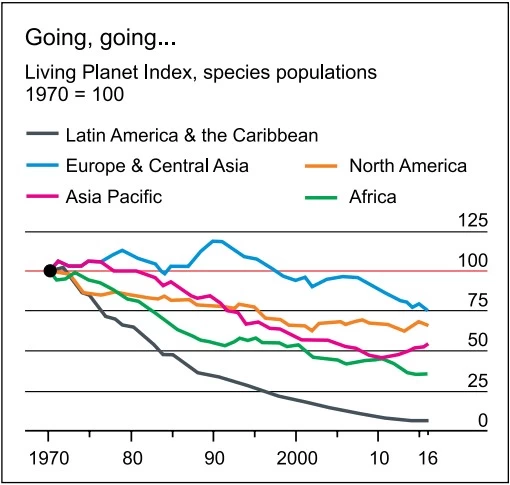
A UN assessment published this week on the progress made in stemming the global loss of species made depressing reading. Not one of the 20 targets adopted by 196 countries in a convention on biodiversity in 2010 has been met. And the latest biennial Living Planet Report from the WWF, an environmental group, found that animal populations worldwide shrank by an average of two-thirds between 1970 and 2016. The falls were greatest in the tropics. In Latin America and the Caribbean animal populations fell by 94%, on average, during the period. It is some comfort that around the world biodiversity and climate change have become big political issues. In Australia koala bears have almost brought down a state government.
(www.economist.com, 18.09.2020.)
The chart shows details about the following - UNESP 2021/Prova II
Inglês - 2021Leia o texto para responder às questões 29 e 30.
The business of climate change

A UN assessment published this week on the progress made in stemming the global loss of species made depressing reading. Not one of the 20 targets adopted by 196 countries in a convention on biodiversity in 2010 has been met. And the latest biennial Living Planet Report from the WWF, an environmental group, found that animal populations worldwide shrank by an average of two-thirds between 1970 and 2016. The falls were greatest in the tropics. In Latin America and the Caribbean animal populations fell by 94%, on average, during the period. It is some comfort that around the world biodiversity and climate change have become big political issues. In Australia koala bears have almost brought down a state government.
(www.economist.com, 18.09.2020.)
Ao reformular a sua pergunta, o Papai Noel - UNICAMP 2021
Inglês - 2021
A página Greengo Dictionary apresenta, em inglês, - UNICAMP 2021
Inglês - 2021A página Greengo Dictionary apresenta, em inglês, interpretações bem-humoradas de expressões do português do Brasil.
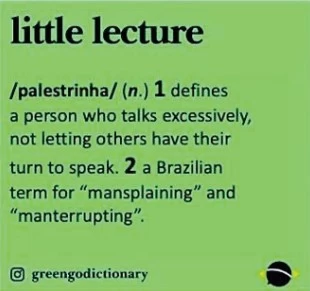
Em uma entrevista, a escritora nigeriana Ayobami - UNICAMP 2021
Inglês - 2021Em uma entrevista, a escritora nigeriana Ayobami Adebayo refletiu sobre os personagens principais (Yejide e Akin) e o contexto sociopolítico de seu romance Stay With Me.

While writing, I also started thinking about the middle class in Nigeria. When Yejide visits her mother-in-law, there’s a very low fence in front of their house. It’s barely a fence. When Yejide and Akin build their own house in the early nineties, they erect a fence that’s higher than the house. You can’t see inside. That was something I observed about architecture in Nigeria— that at some point, probably in the eighties and nineties, when things became quite turbulent and there was all of this insecurity, one of the ways the people who could afford to insulate themselves against what was going on did was to build higher fences, to use money as a shield in a sense. I wanted that political turbulence to play in the background.
Apresenta-se, a seguir, um artigo de opinião, seguido - UNICAMP 2021
Inglês - 2021Apresenta-se, a seguir, um artigo de opinião, seguido da resposta de uma leitora.
IS BURNOUT REAL?
Last week, the World Health Organization upgraded burnout from a “state” of exhaustion to “a syndrome” resulting from “chronic workplace stress” in its International Disease Classification. That is such a broad definition that it could well apply to most people at some point in their working lives. When a disorder is reportedly so widespread, it makes me wonder whether we are at risk of medicalizing everyday distress. If almost everyone suffers from burnout, then no one does, and the concept loses all credibility.
By Richard A. Friedman
I'm sure the author’s generation also experienced workplace stress. However, his generation also experienced real economic stability and socioeconomic gains. There was a light at the end of the tunnel. Currently, we are working tirelessly towards what ends? There doesn’t seem to be a light at the end of the tunnel. The burnout is psychological and existential as much as it is physical.
Anna B. – New York, June 4, 2019
All aboard the flat earth cruise – just don’t tell them - UNICAMP 2021
Inglês - 2021All aboard the flat earth cruise – just don’t tell them about nautical navigation
A group of people who believe the Earth is flat have announced their “boldest adventure yet”: a Flat Earth cruise scheduled for 2020. Flat earthers will enjoy swimming pools and perhaps even an artificial surf wave. There’s just one problem for those celebrating the flatness of the Earth. The navigational systems cruise ships, and other vessels, use rely on the fact that the Earth is not flat. “Nautical charts are designed with that in mind: that the Earth is round. GPS relies on 24 main satellites which orbit the Earth to provide positional and navigational information. The reason why 24 satellites were used is because of the curvature of the Earth,” said Henk Keijer, a former cruise ship captain who sailed all over the globe during a 23-year career. “At least three satellites are required to determine a position. But someone located on the other side of the Earth would also like to know their position, so they also require a certain number of satellites. Had the Earth been flat, a total of three satellites would have been enough to provide this information to everyone on Earth. But it is not enough, because the Earth is round.”
O cartaz anterior, divulgado pela Organização Mundial - UNICAMP 2021
Inglês - 2021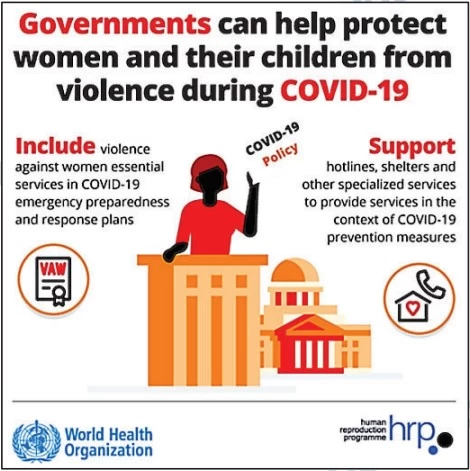
Reproduz-se abaixo uma carta do poeta inglês John Keats - UNICAMP 2021
Inglês - 2021Reproduz-se abaixo uma carta do poeta inglês John Keats a sua amada Fanny Brawne.
Sweetest Fanny,
When you passed my window home yesterday, I was filled with as much admiration as if I had then seen you for the first time. You uttered a half complaint once that I only loved your Beauty. Have I nothing else then to love in you but that? Do not I see your heart? Nothing has been able to turn your thoughts a moment from me. Even if you did not love me I could not help an entire devotion to you: how much more deeply then must I feel for you knowing you love me. My Mind has been the most discontented and restless one that ever was put into a body too small for it. I never felt my Mind repose upon anything with complete and undistracted enjoyment – upon no person but you. When you are in the room my thoughts never fly out of window: you always concentrate my whole senses.
Your affectionate, J. Keats
Equity is about giving people what they need, in order - UNICAMP 2021
Inglês - 2021Equity is about giving people what they need, in order to make things fair. This is not the same as equality, social justice, nor is it the same as inequality. It is giving more to those who need it, which is proportionate to their own circumstances, in order to ensure that everyone has the same opportunities; for example providing more support to a disadvantaged student so they can reach their full potential.
The texts are mainly about famous people who a) were - FAMERP 2021
Inglês - 2021Leia os textos para responder às questões de 11 a 17.
Female historical figures who were happy with their choices

In the 1932 film “Grand Hotel,” Garbo’s character famously proclaimed, “I want to be alone,” a quote that was affiliated with her for the rest of her life. She did have several relationships, including a long on-and-off with her frequent co-star John Gilbert. He once proposed to her, but she said no. “I was in love with him, but I froze,” she later told New York magazine. “I was afraid he would tell me what to do and boss me. I always wanted to be the boss.”

The iconic designer had many, many love affairs and several significant relationships, but she never married. She was once quoted as saying, “I never wanted to weigh more heavily on a man than a bird.” Less great: the evidence that she worked as a Nazi spy during the Second World War.

Cassatt had a lot of familial love, as she’s maybe best known for her paintings that clearly but unsentimentally depicted the bonds between parents and children. But that love came from her relationships with her nieces and nephews, as she chose not to marry and didn’t have kids herself. The Impressionist painter enjoyed the freedoms that feminism had given women of her privileged stature by the turn of the 20th century — among them the right to an independent life. She was highly educated and well-travelled, and spoke out about the importance of female suffrage.

Like Jo in her best-known book “Little Women,” Alcott was independent and concerned with advancing women’s place in the world. But unlike Jo, she never married. “I’d rather be a free spinster and paddle my own canoe,” she wrote in her journal.
(Maija Kappler. www.huffingtonpost.ca, 28.02.2020. Adaptado.)
No trecho do texto sobre Greta Garbo “a quote that was - FAMERP 2021
Inglês - 2021Leia os textos para responder às questões de 11 a 17.
Female historical figures who were happy with their choices

In the 1932 film “Grand Hotel,” Garbo’s character famously proclaimed, “I want to be alone,” a quote that was affiliated with her for the rest of her life. She did have several relationships, including a long on-and-off with her frequent co-star John Gilbert. He once proposed to her, but she said no. “I was in love with him, but I froze,” she later told New York magazine. “I was afraid he would tell me what to do and boss me. I always wanted to be the boss.”

The iconic designer had many, many love affairs and several significant relationships, but she never married. She was once quoted as saying, “I never wanted to weigh more heavily on a man than a bird.” Less great: the evidence that she worked as a Nazi spy during the Second World War.

Cassatt had a lot of familial love, as she’s maybe best known for her paintings that clearly but unsentimentally depicted the bonds between parents and children. But that love came from her relationships with her nieces and nephews, as she chose not to marry and didn’t have kids herself. The Impressionist painter enjoyed the freedoms that feminism had given women of her privileged stature by the turn of the 20th century — among them the right to an independent life. She was highly educated and well-travelled, and spoke out about the importance of female suffrage.

Like Jo in her best-known book “Little Women,” Alcott was independent and concerned with advancing women’s place in the world. But unlike Jo, she never married. “I’d rather be a free spinster and paddle my own canoe,” she wrote in her journal.
(Maija Kappler. www.huffingtonpost.ca, 28.02.2020. Adaptado.)
Apoie nosso trabalho!
Assine Agora